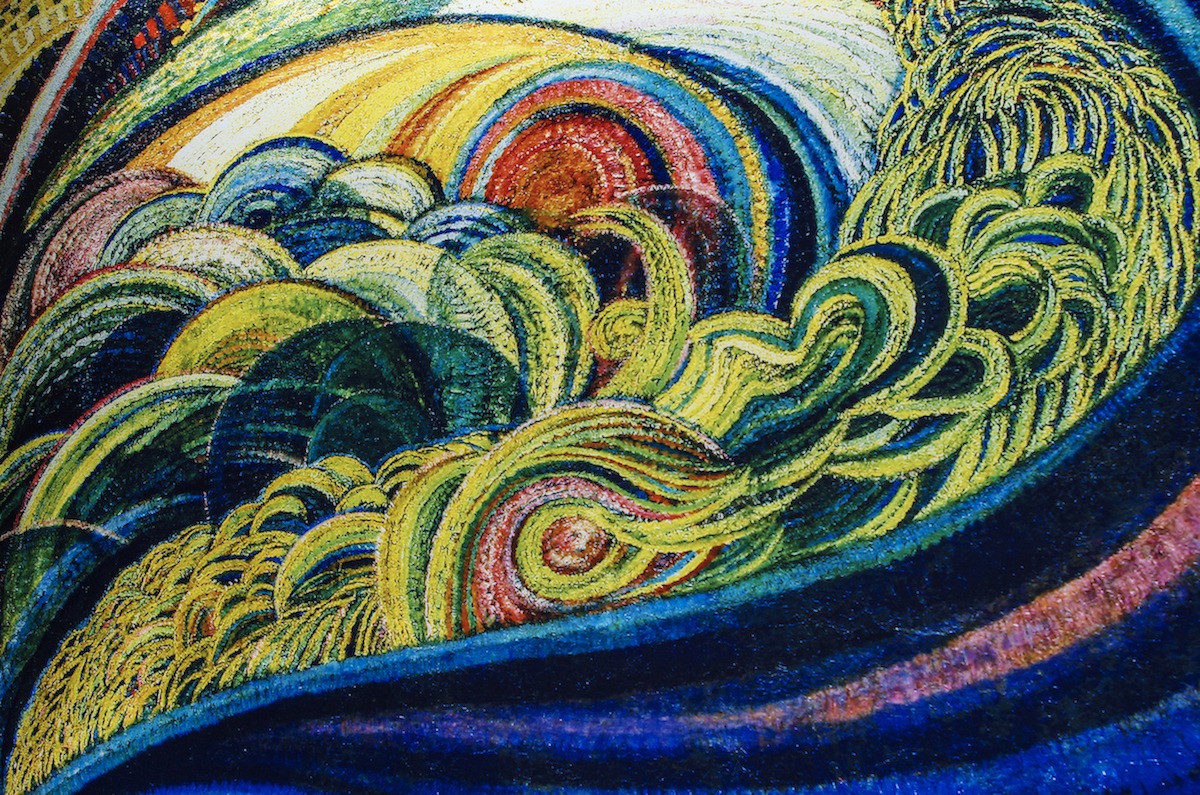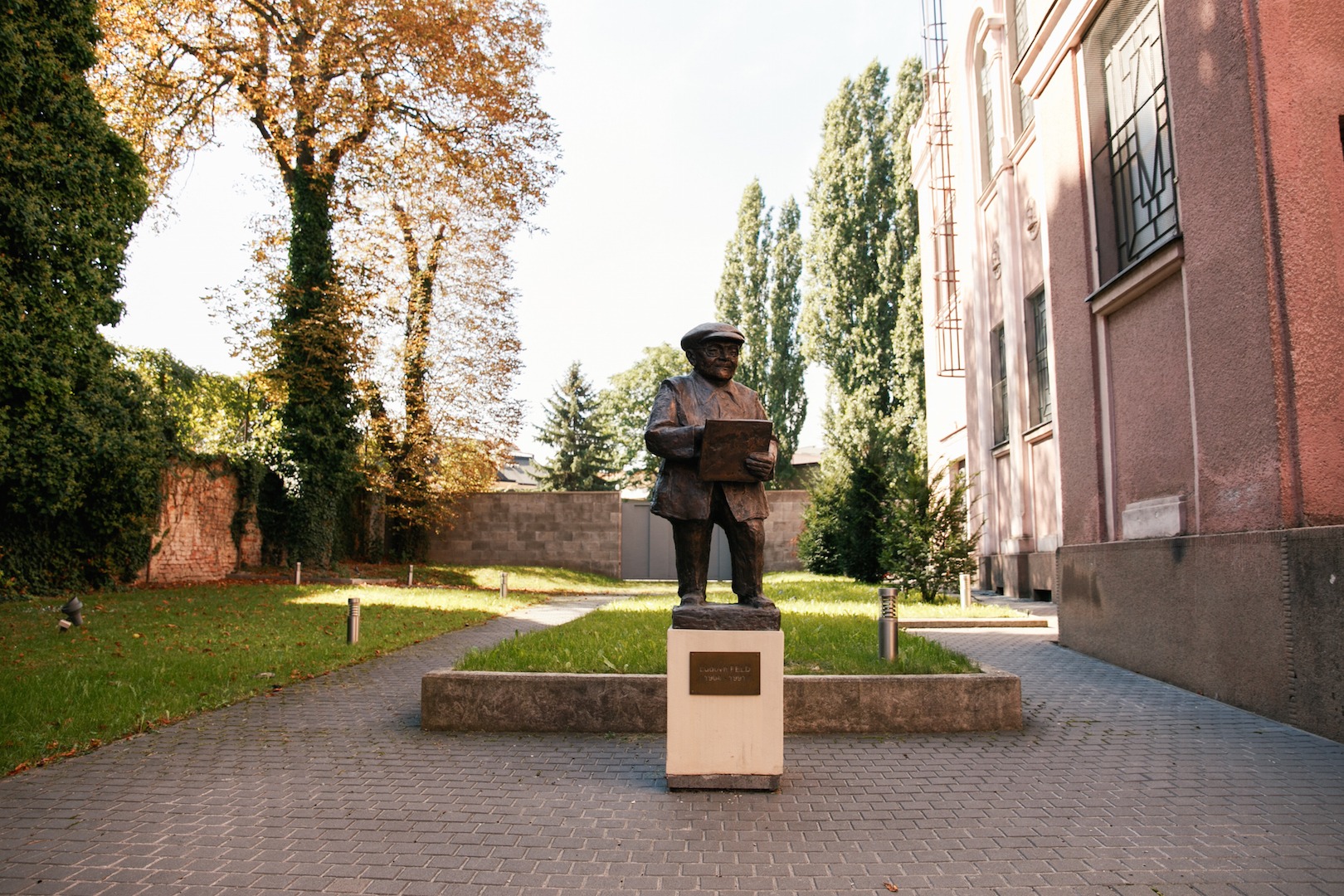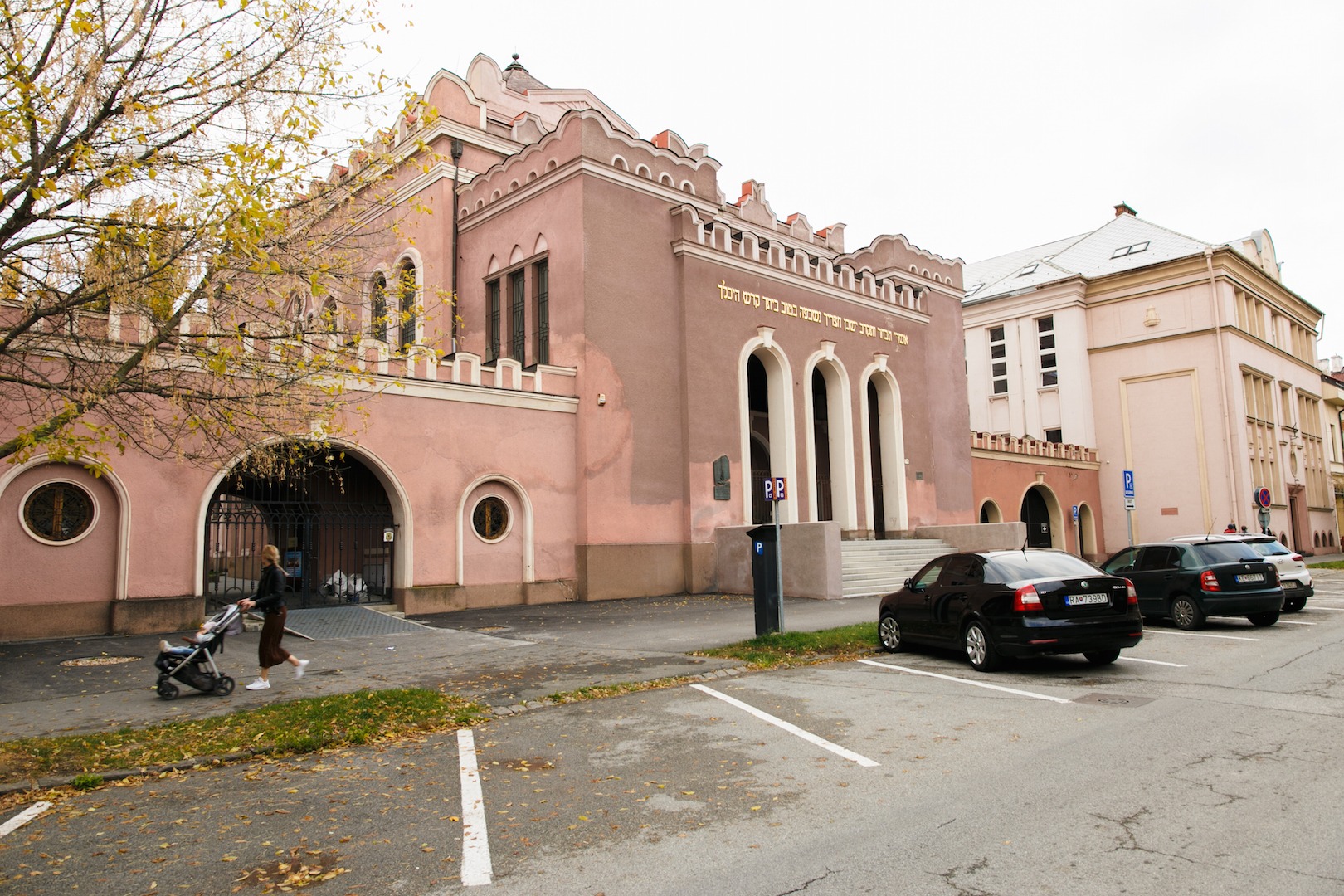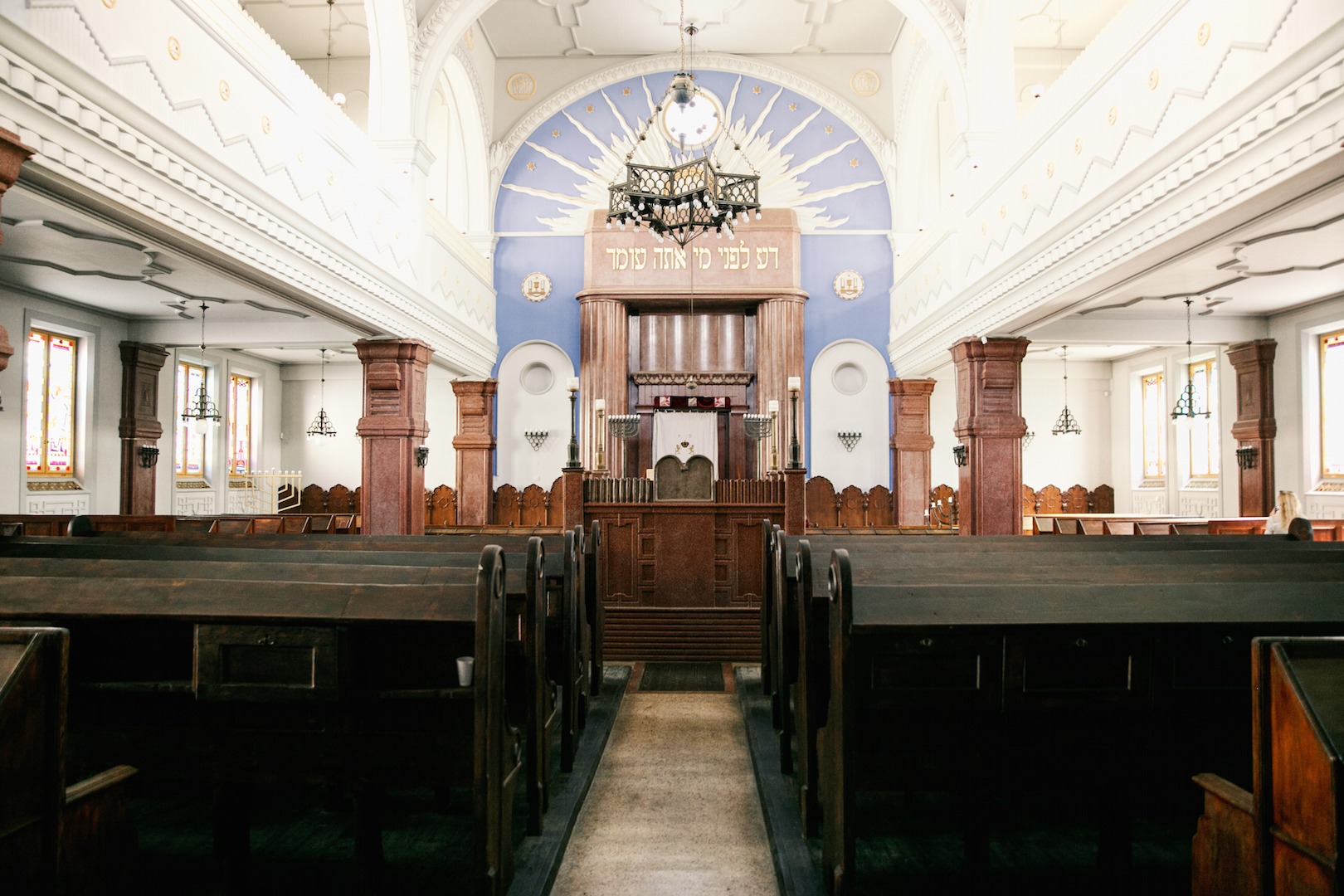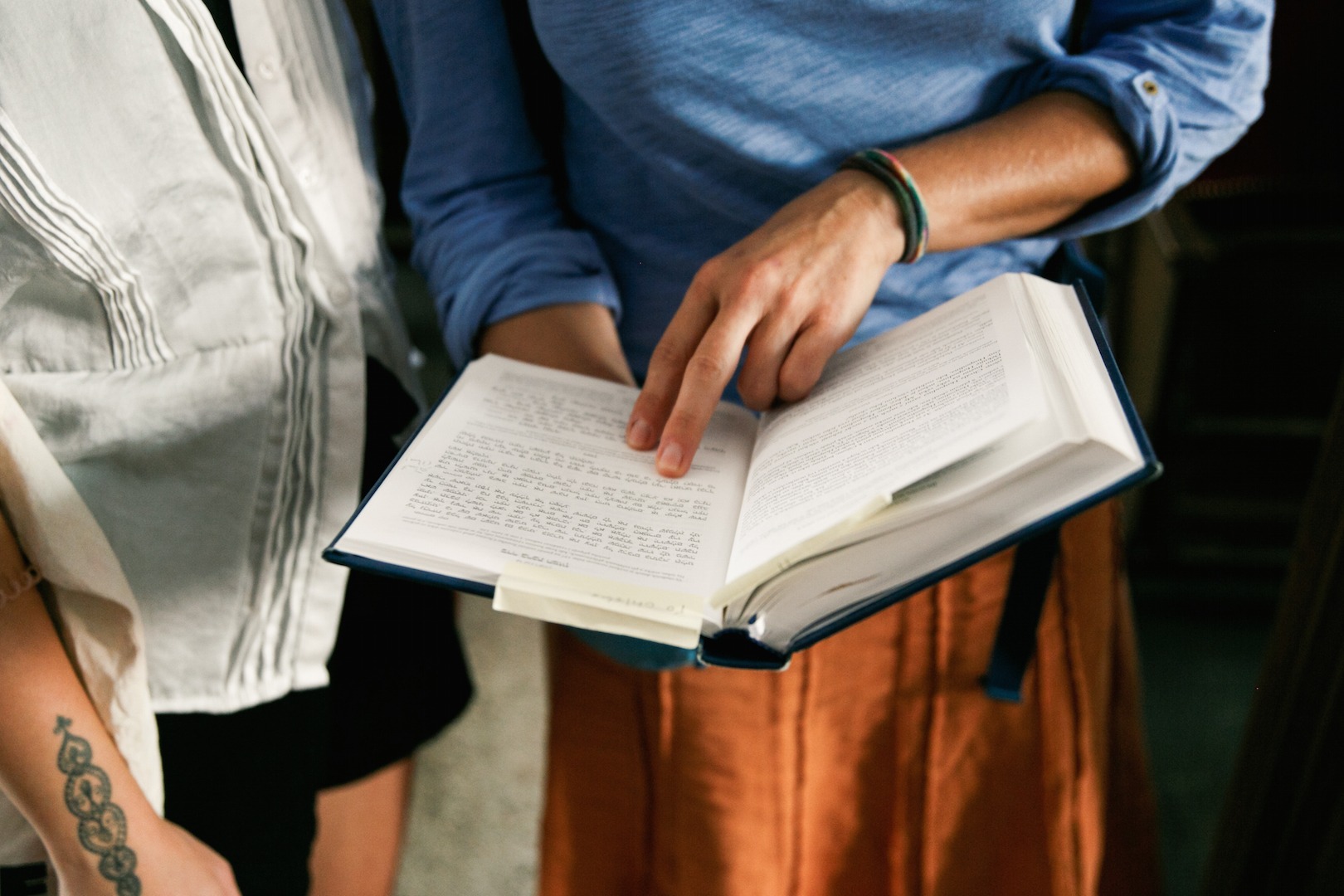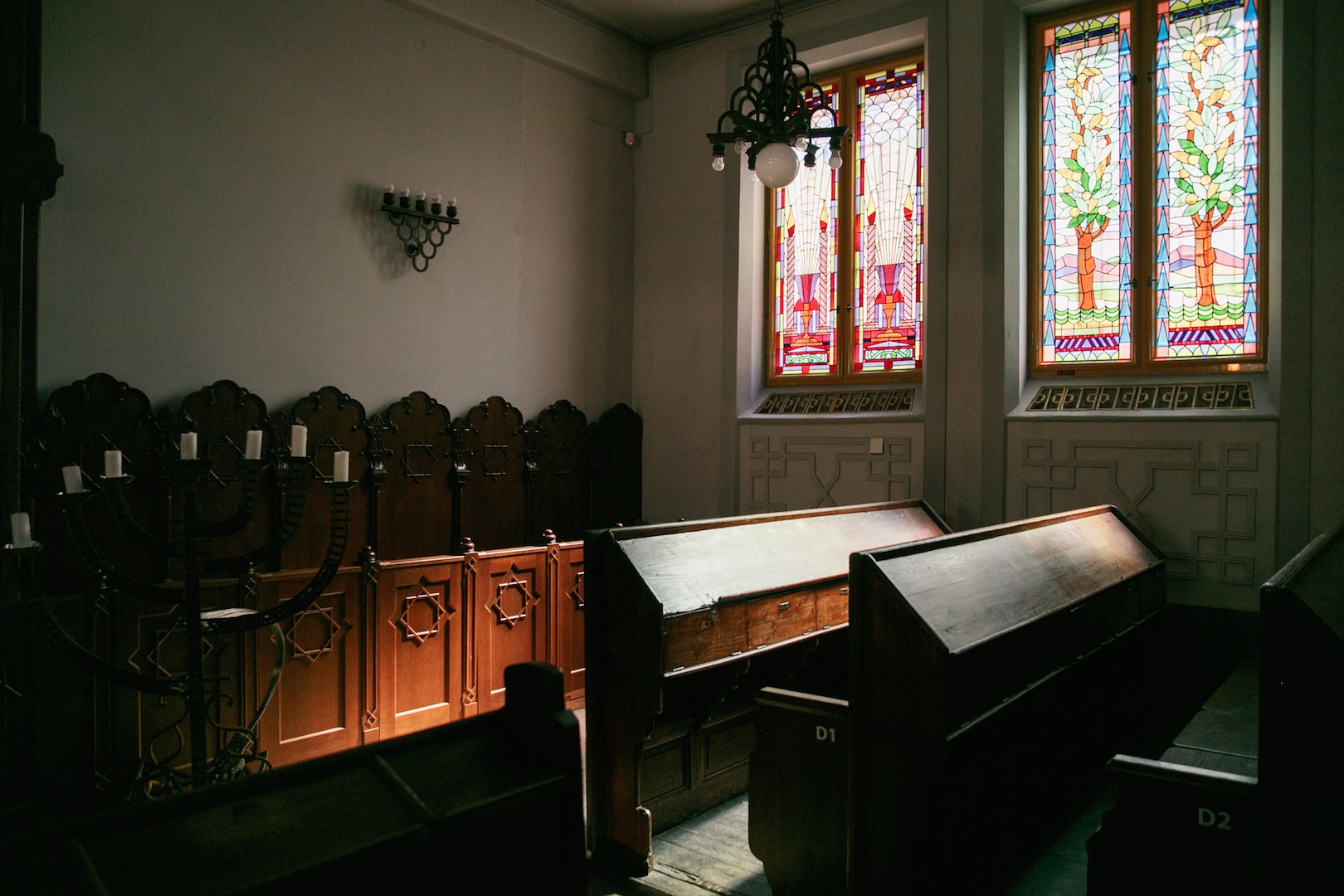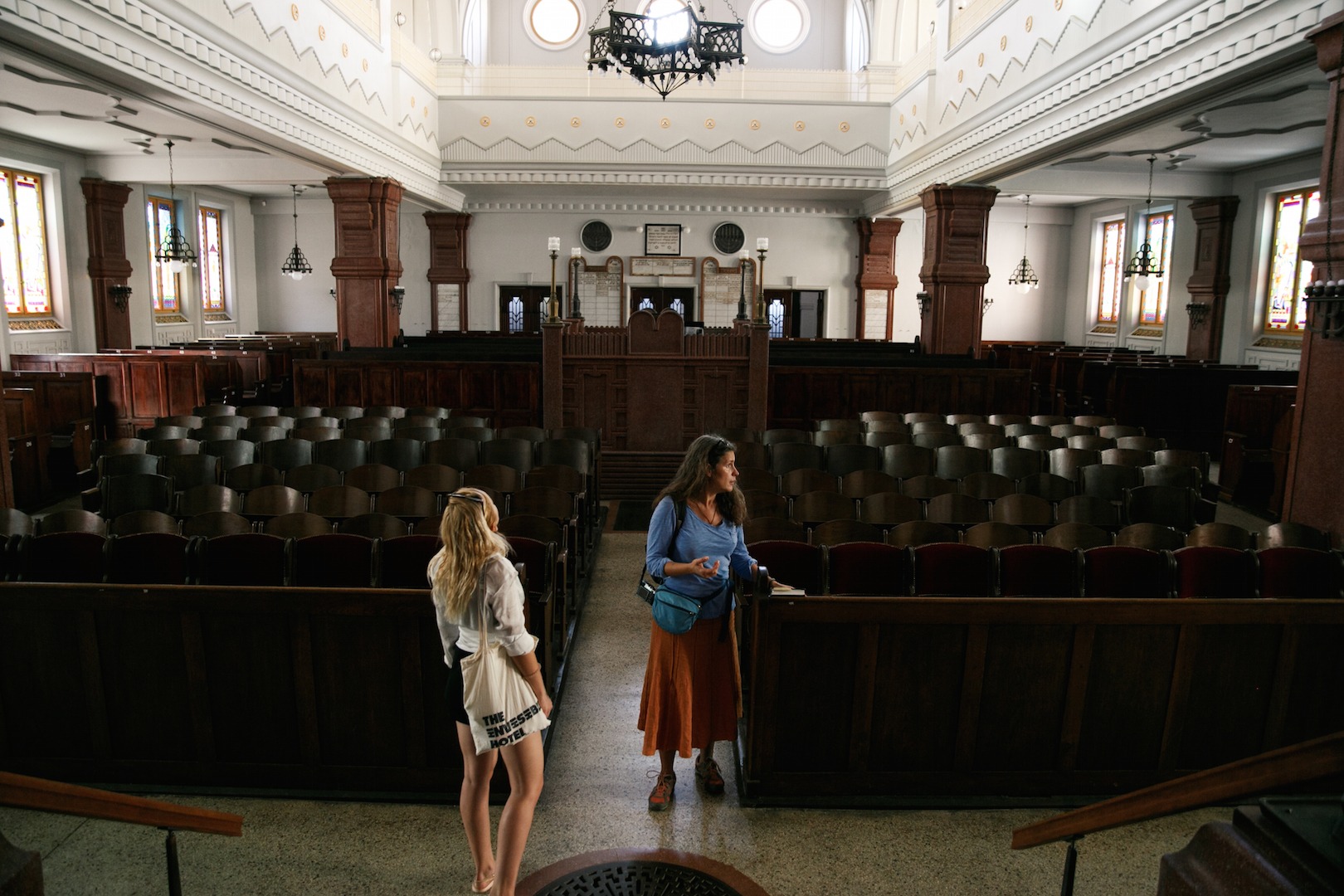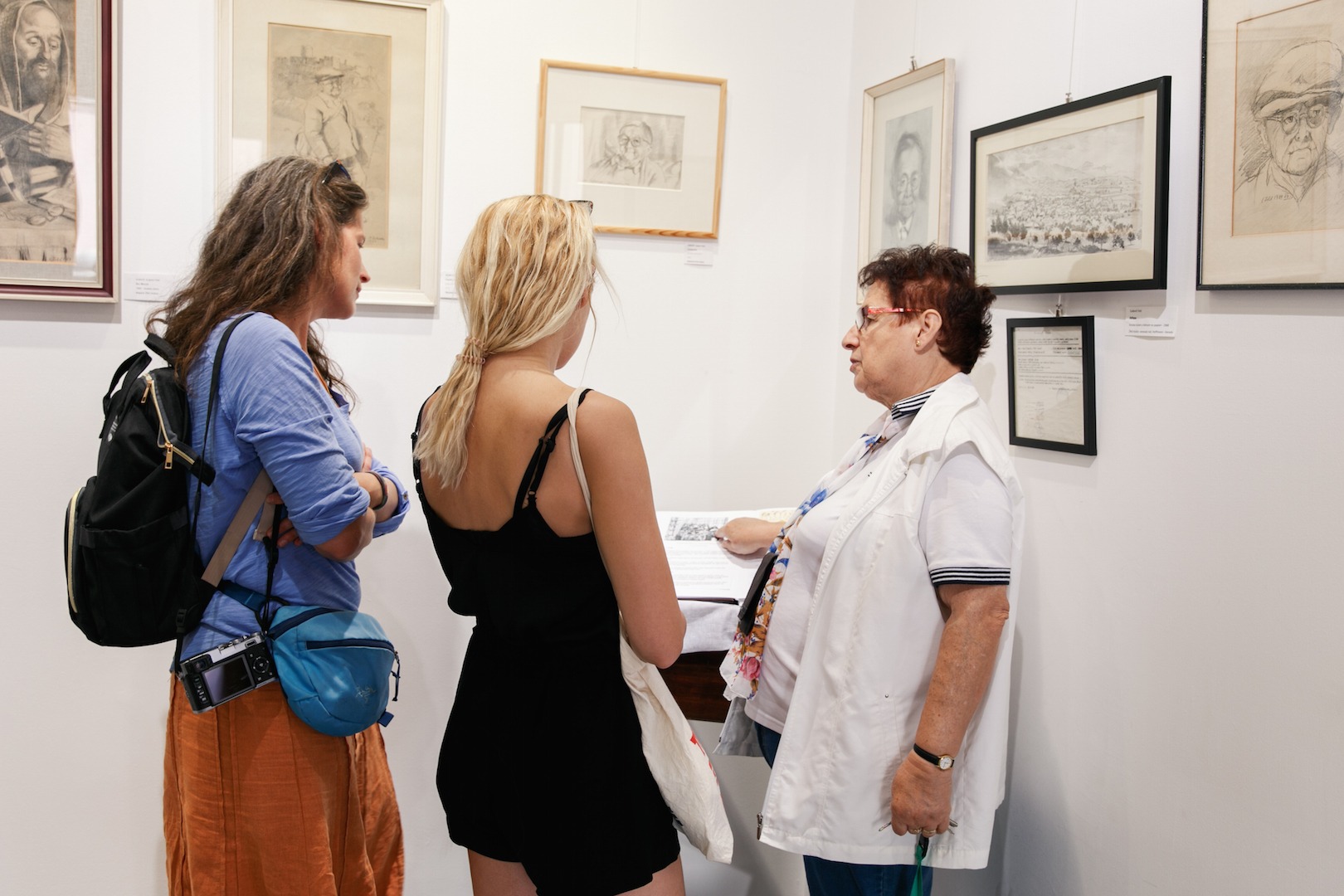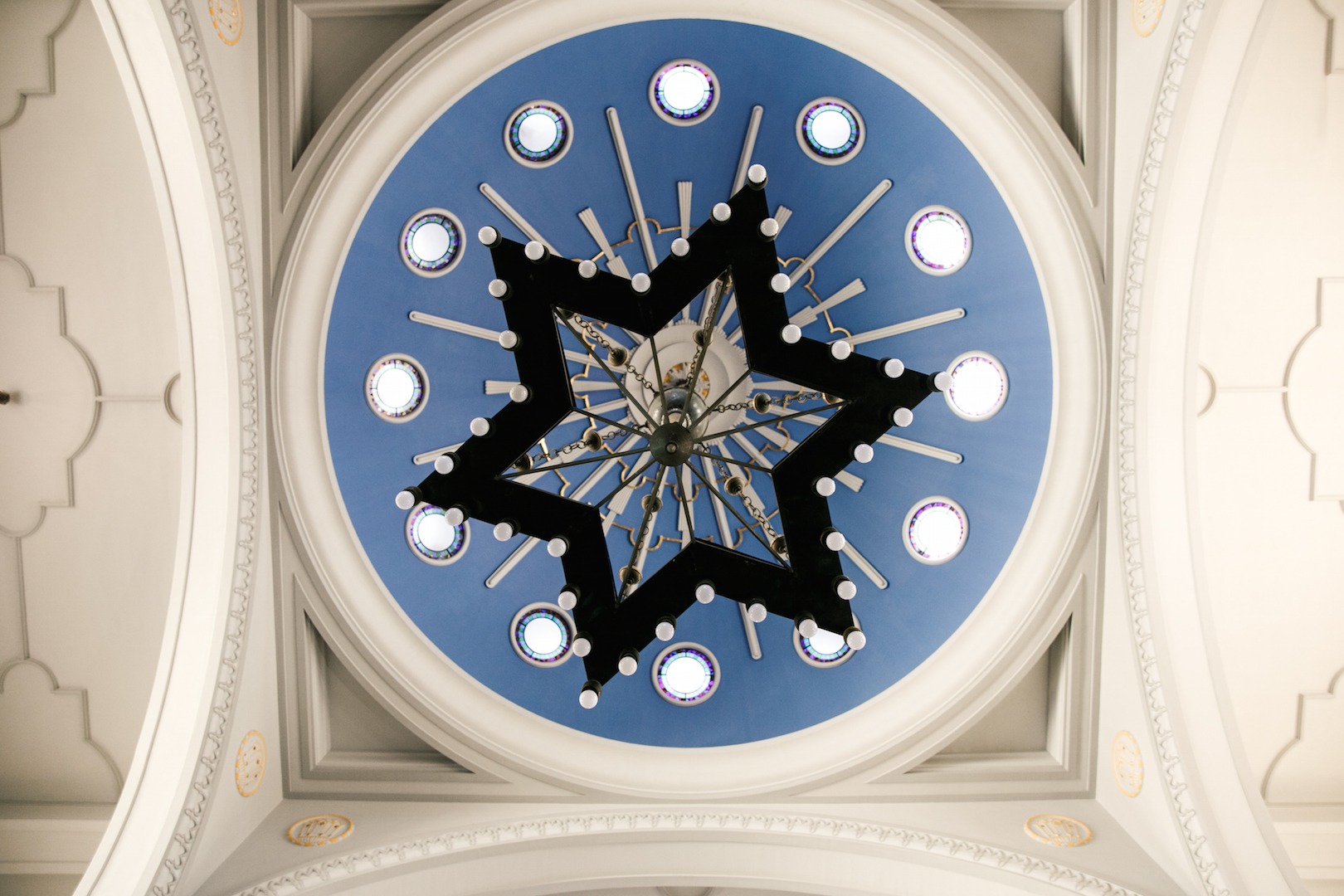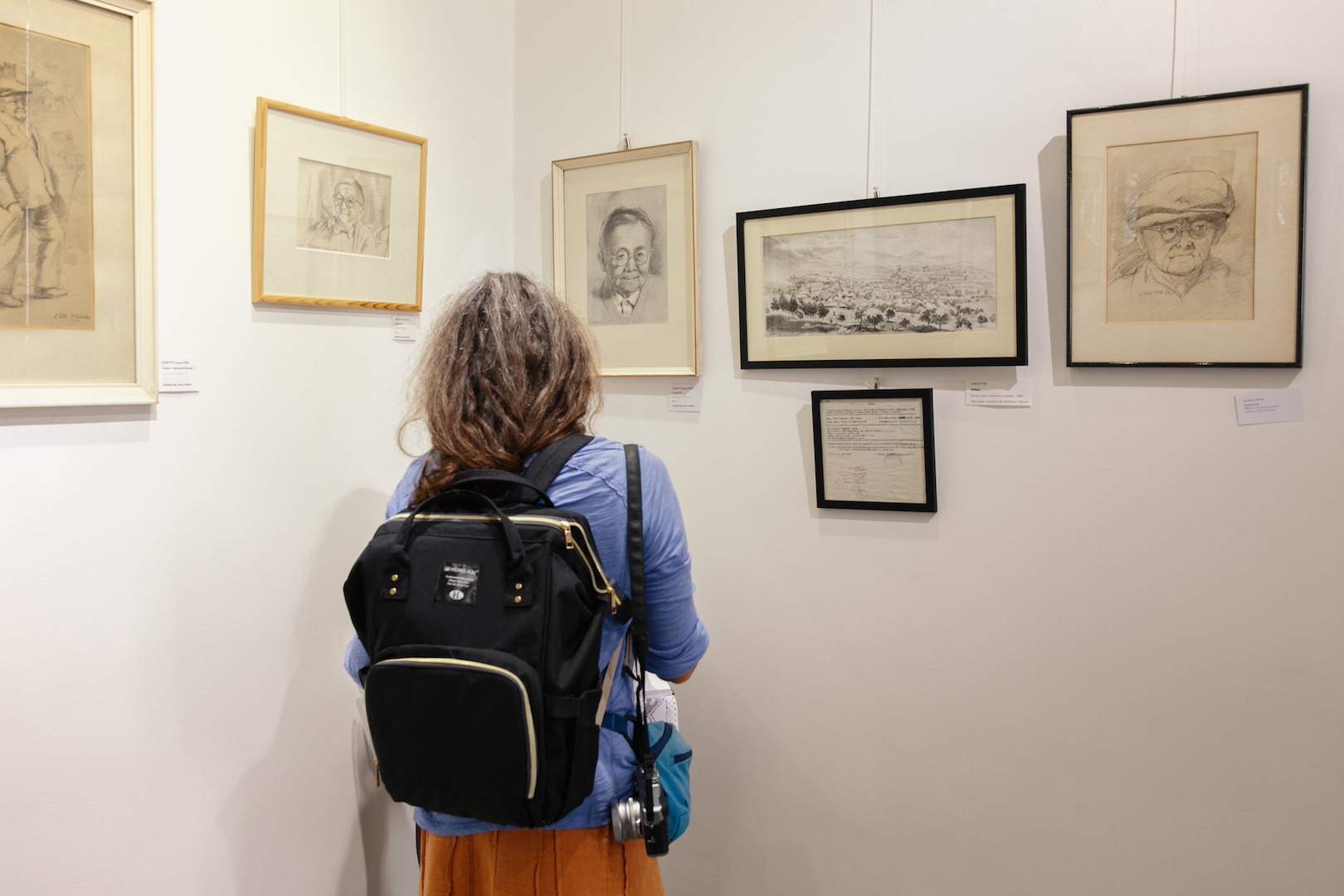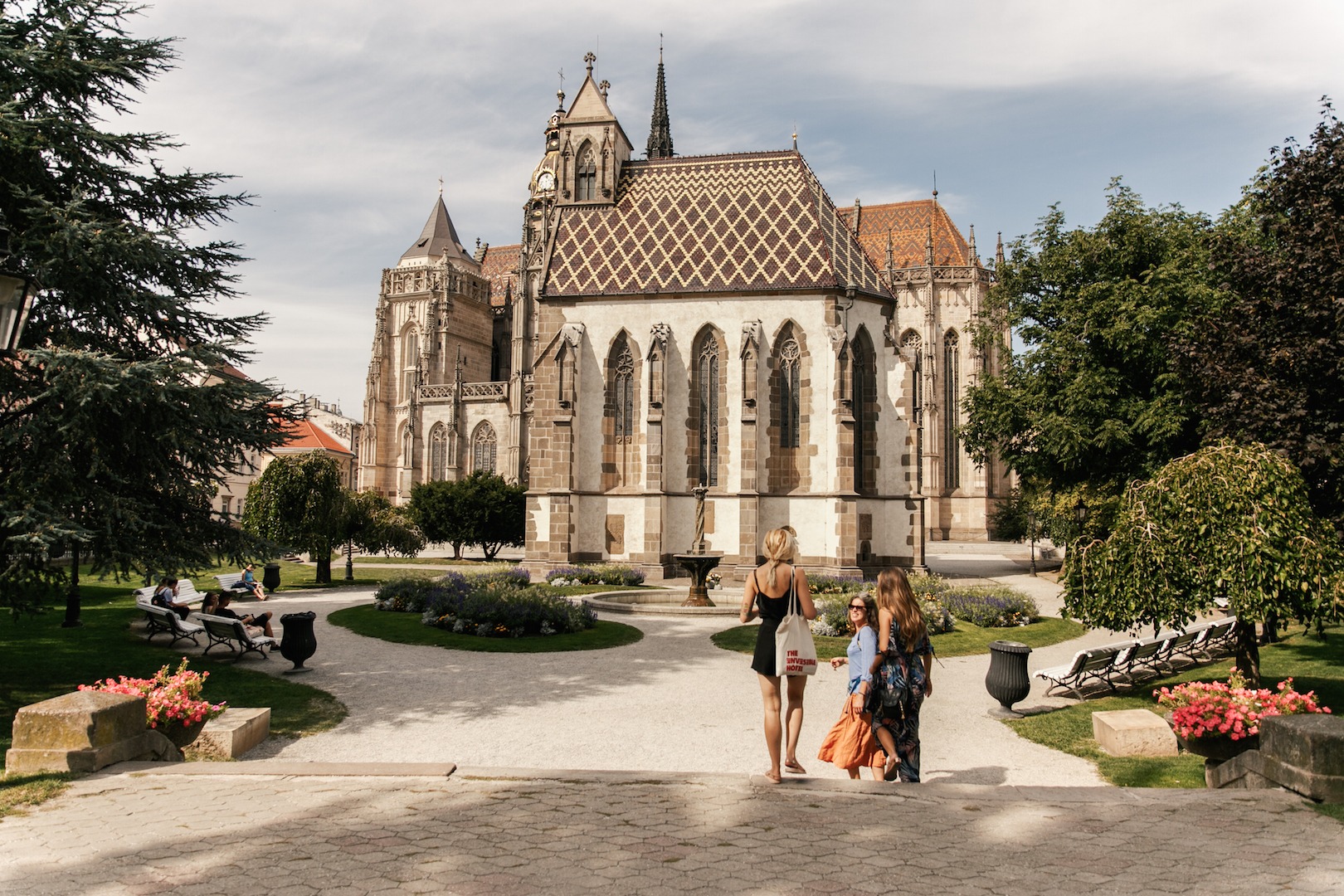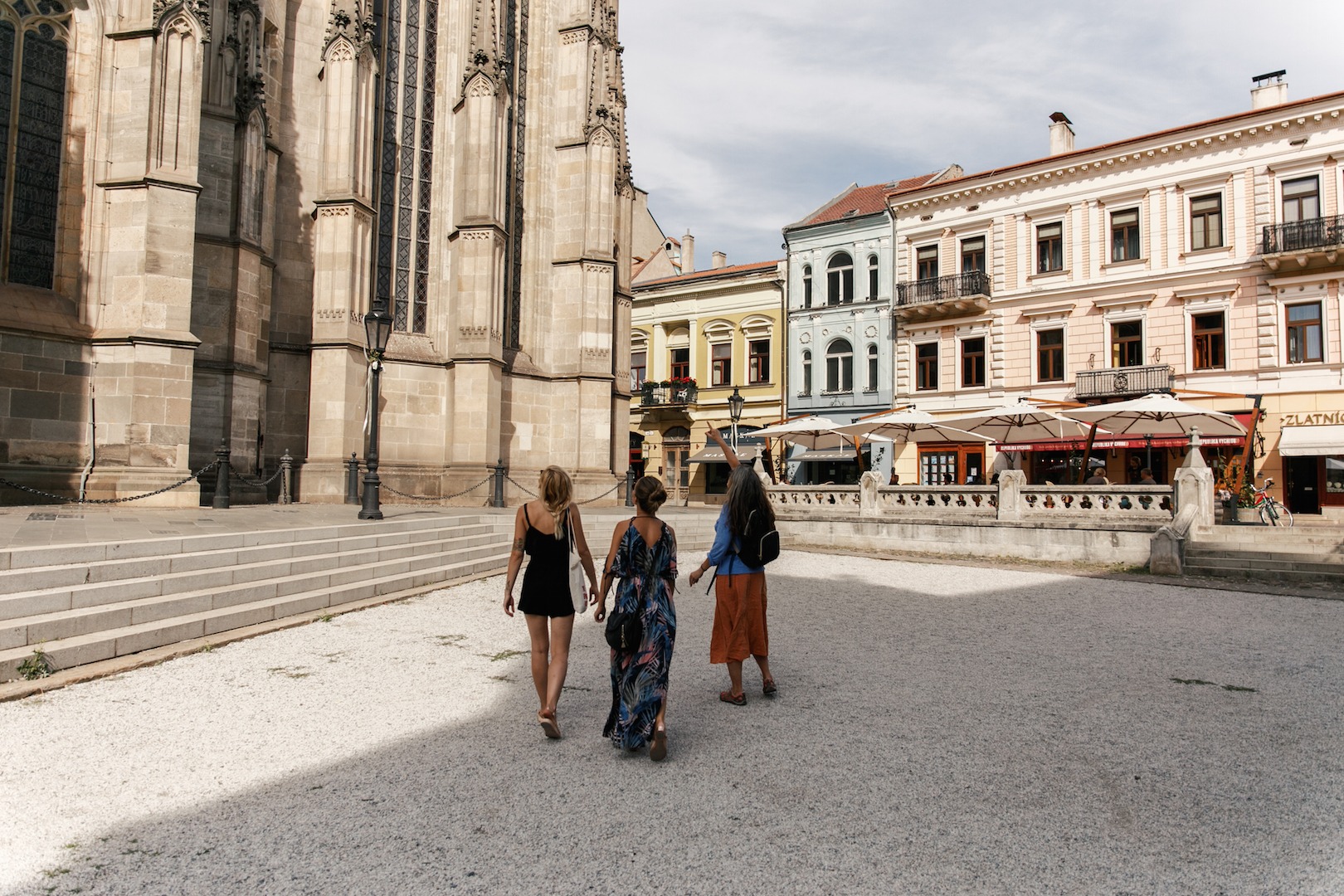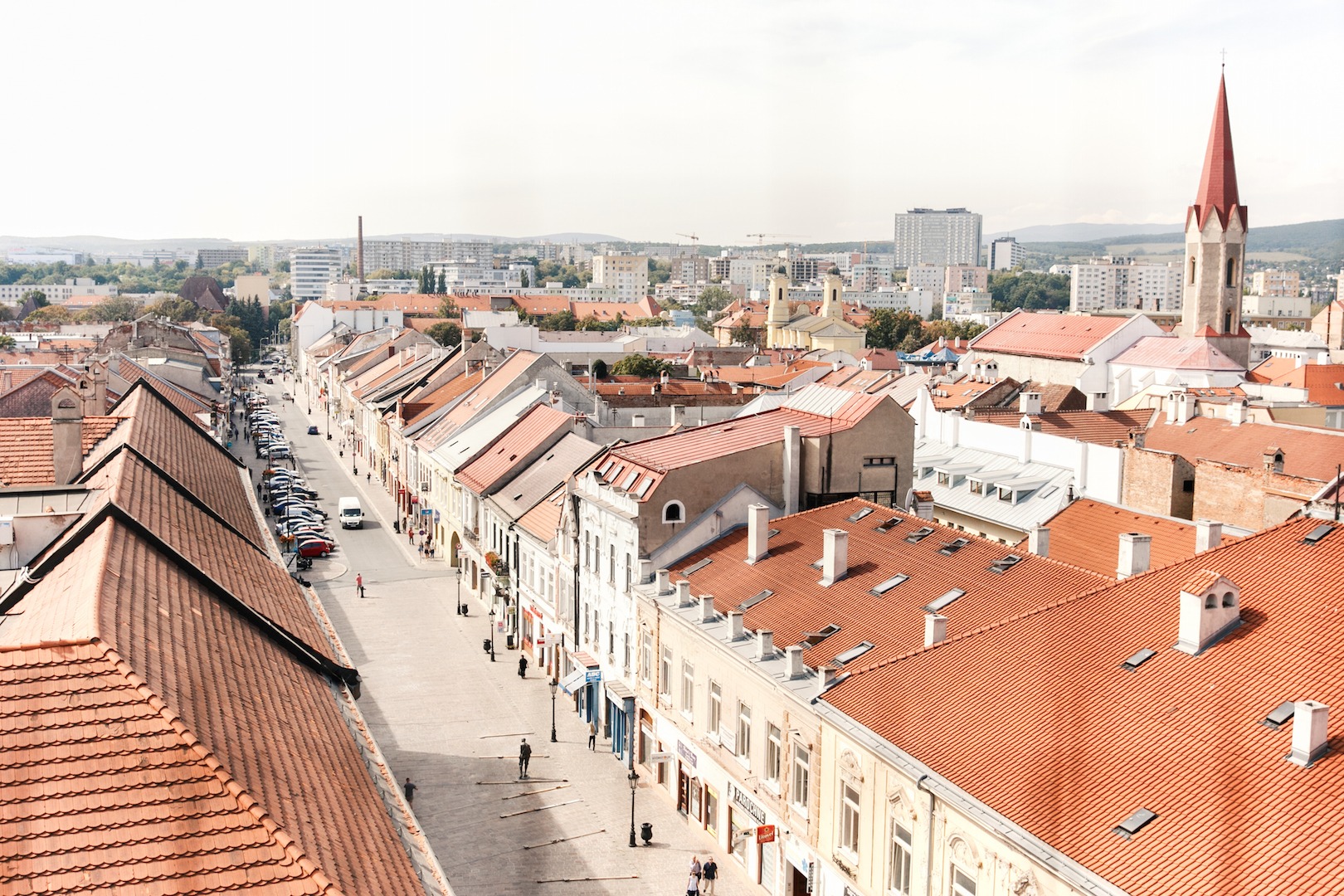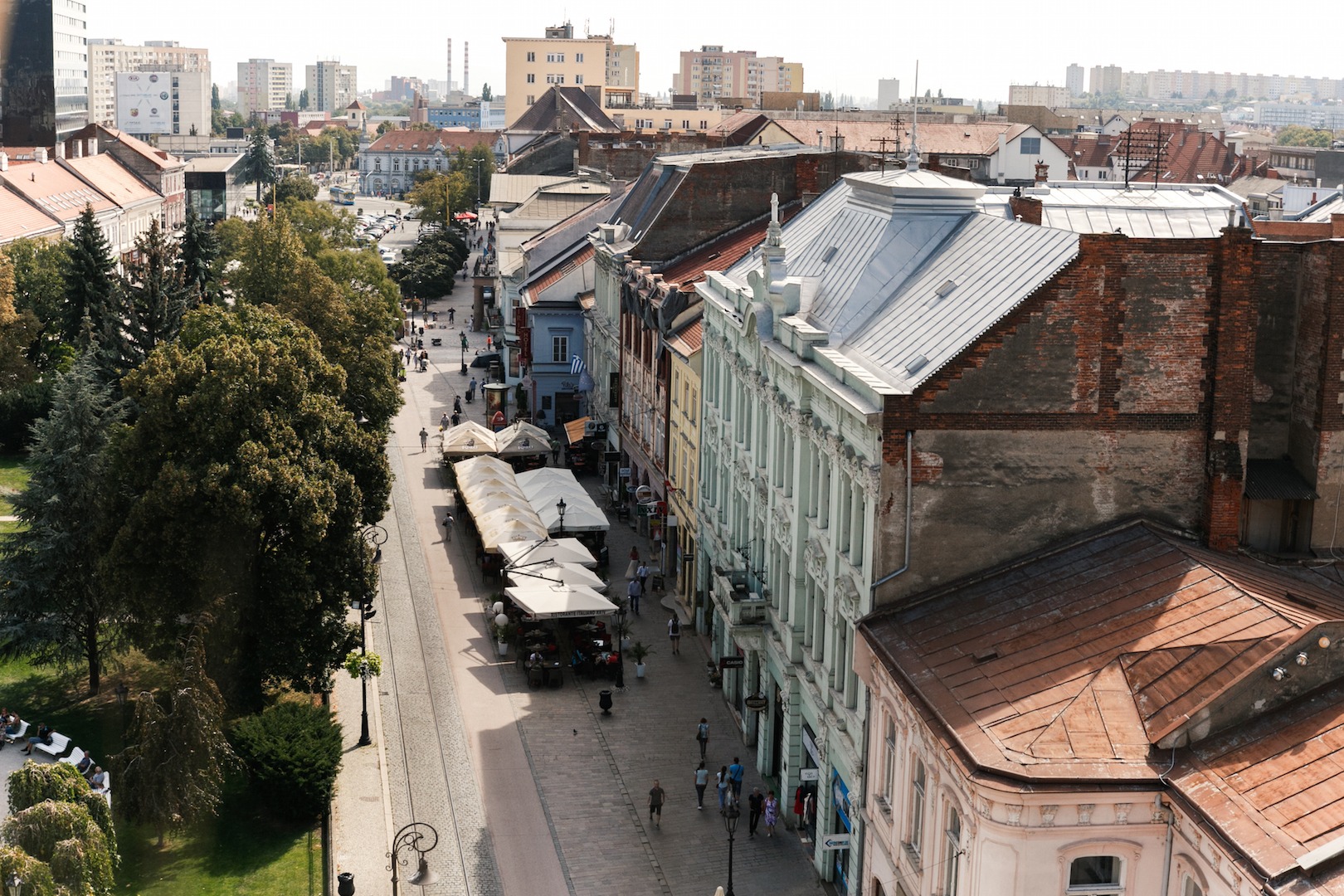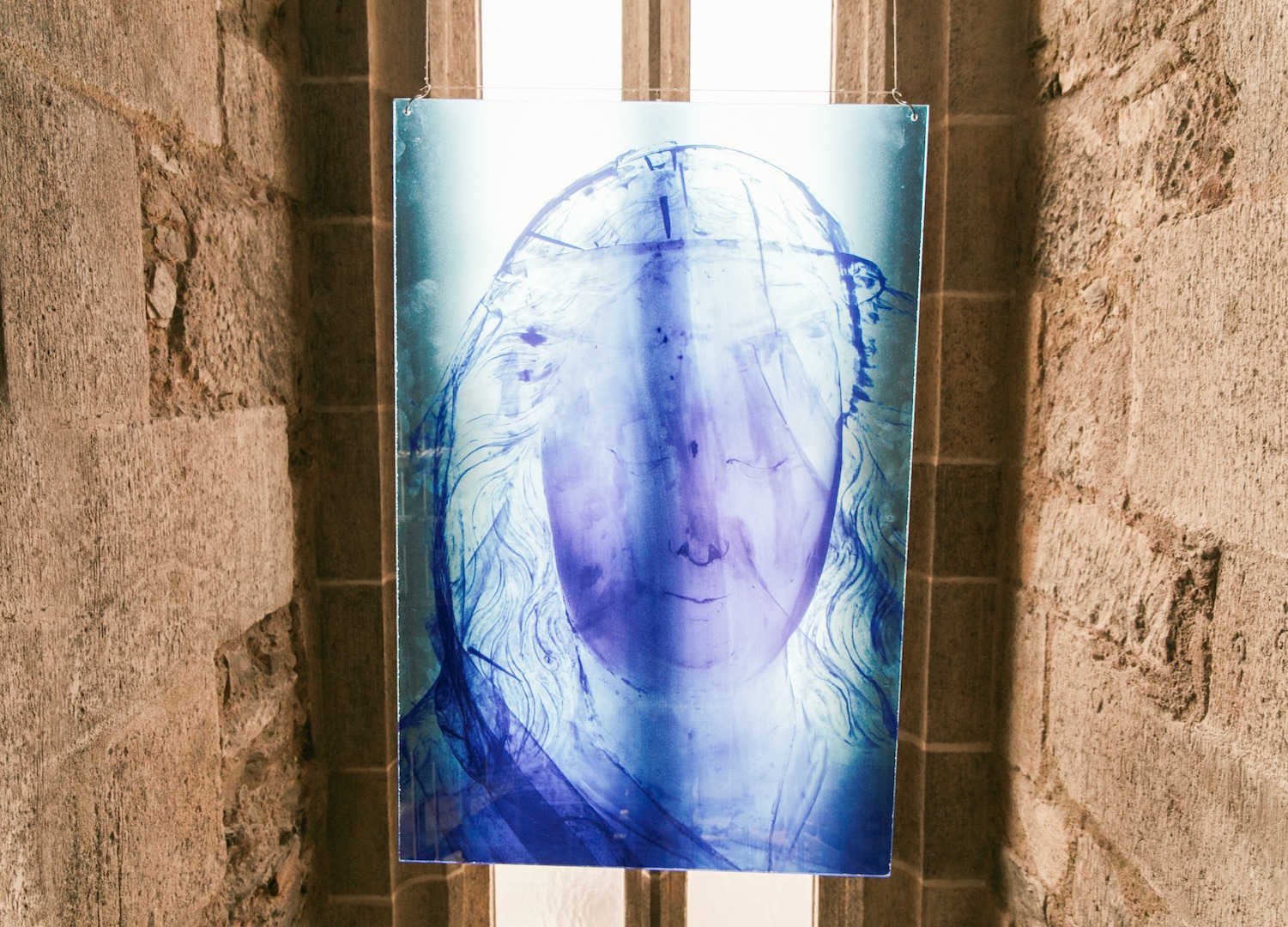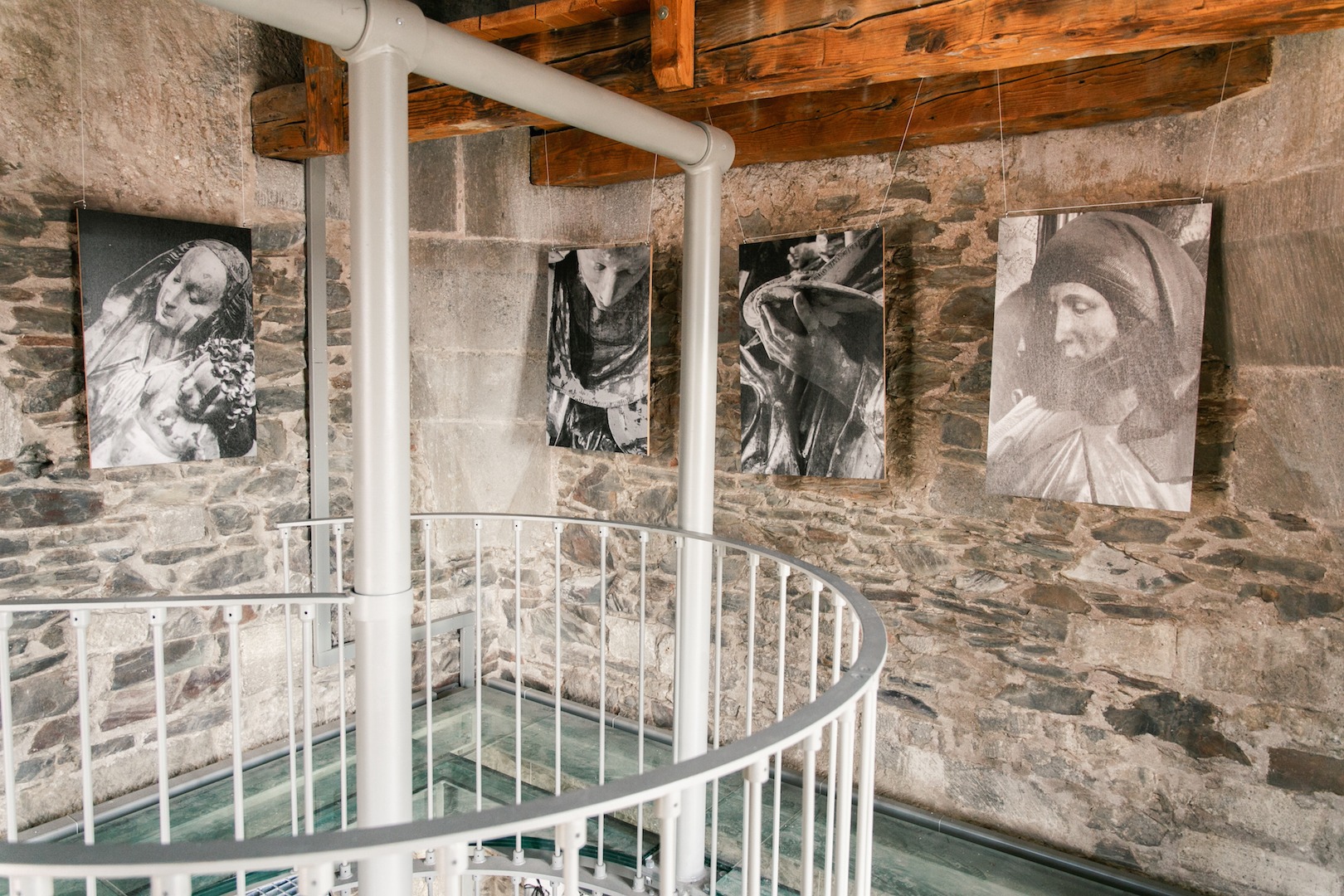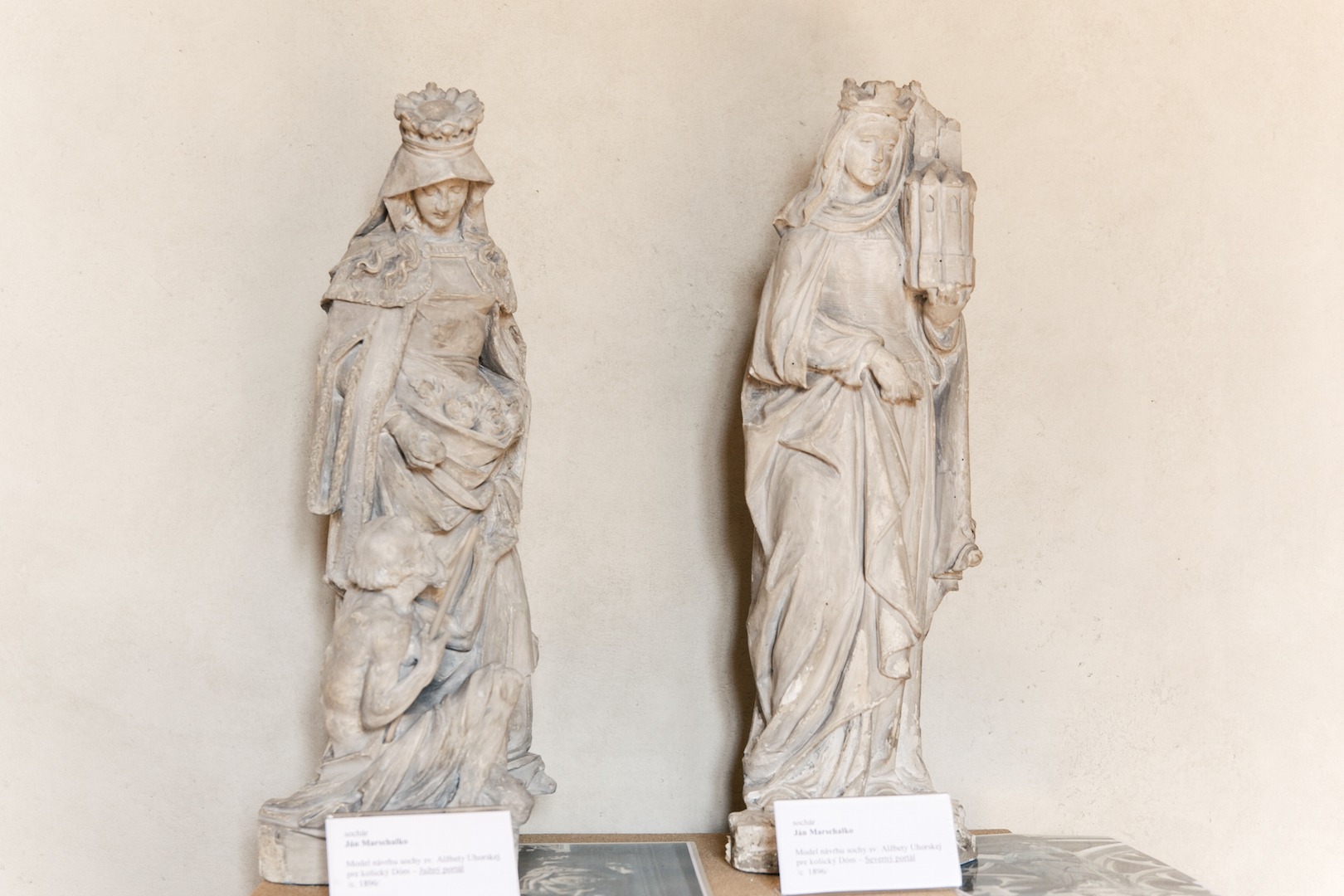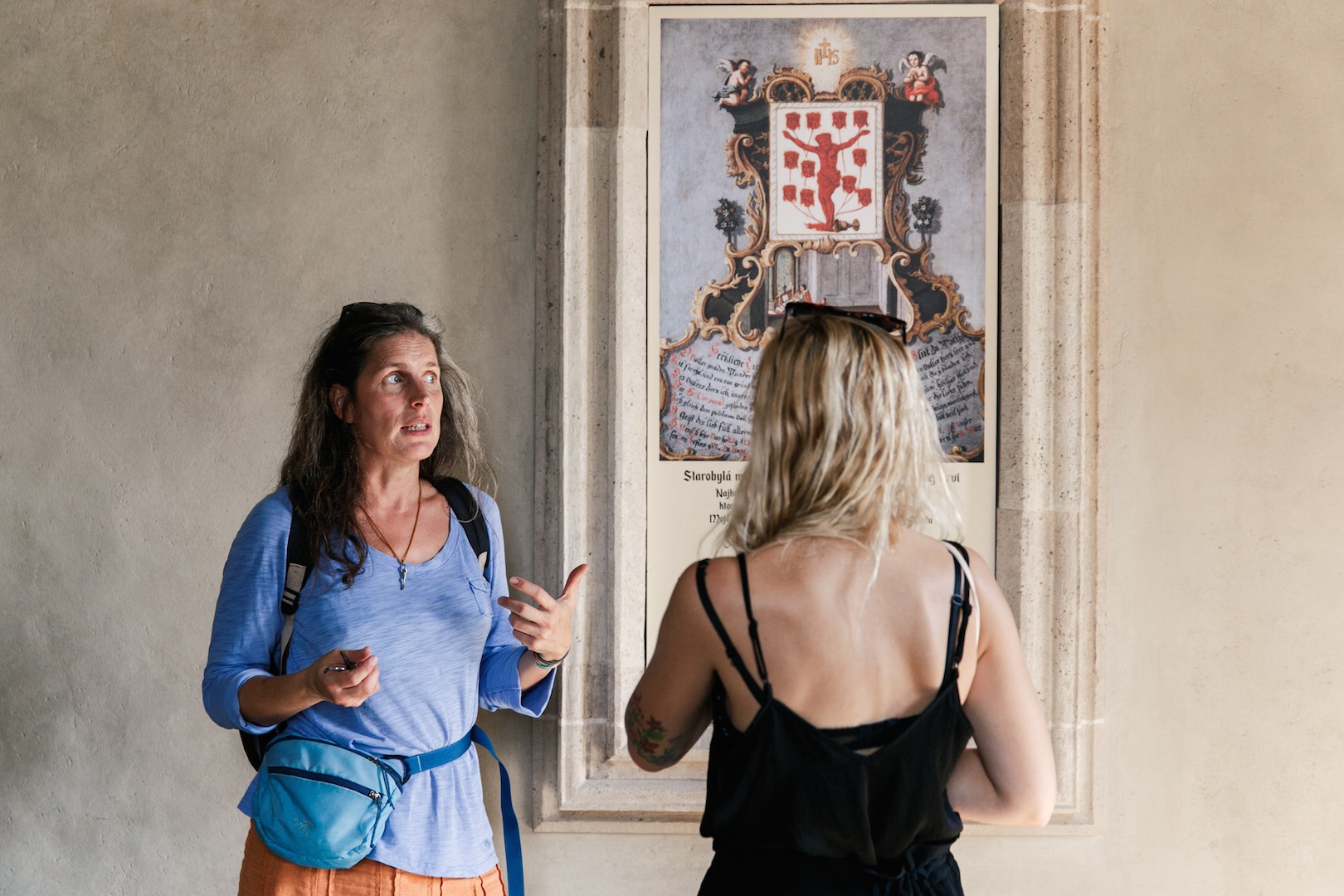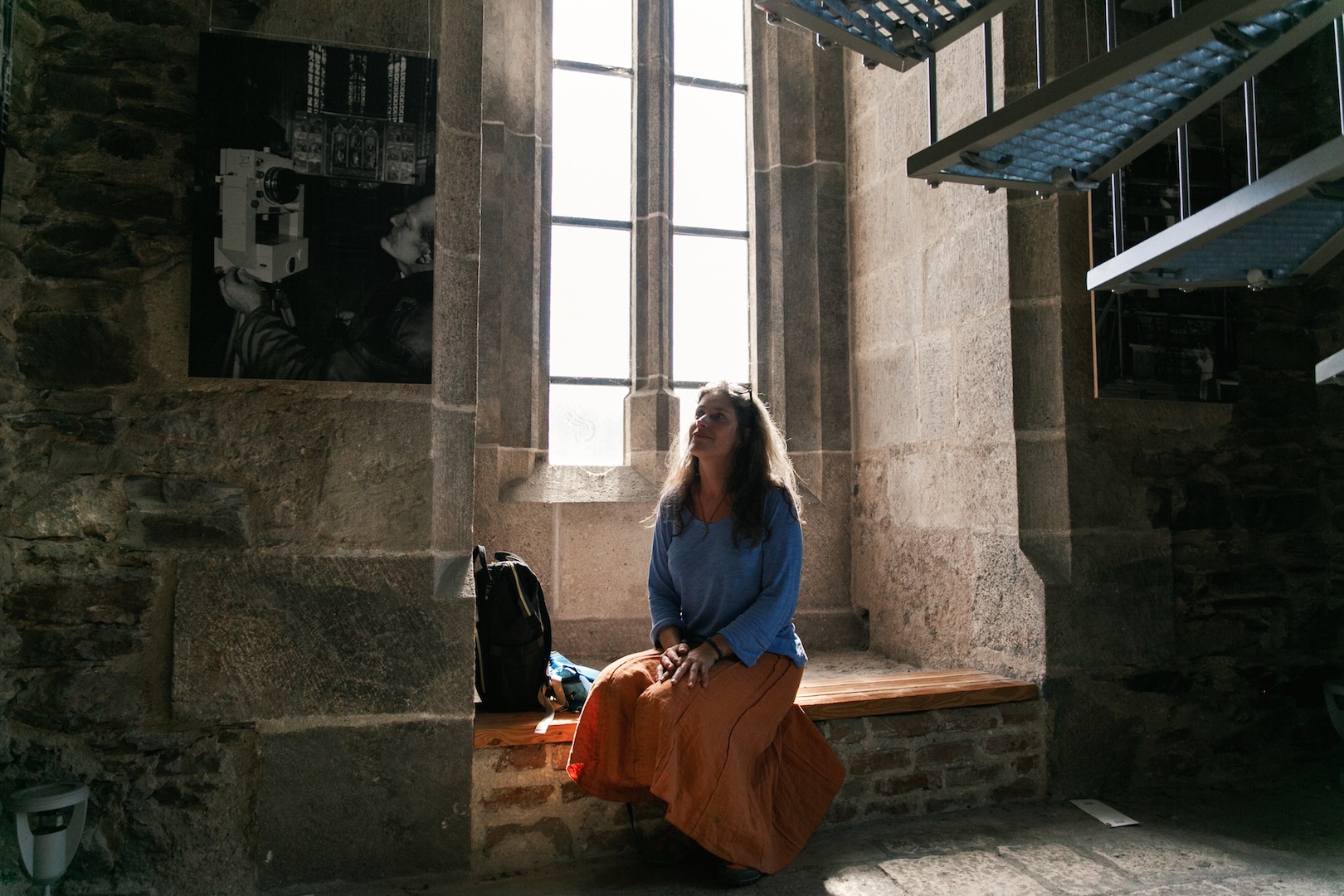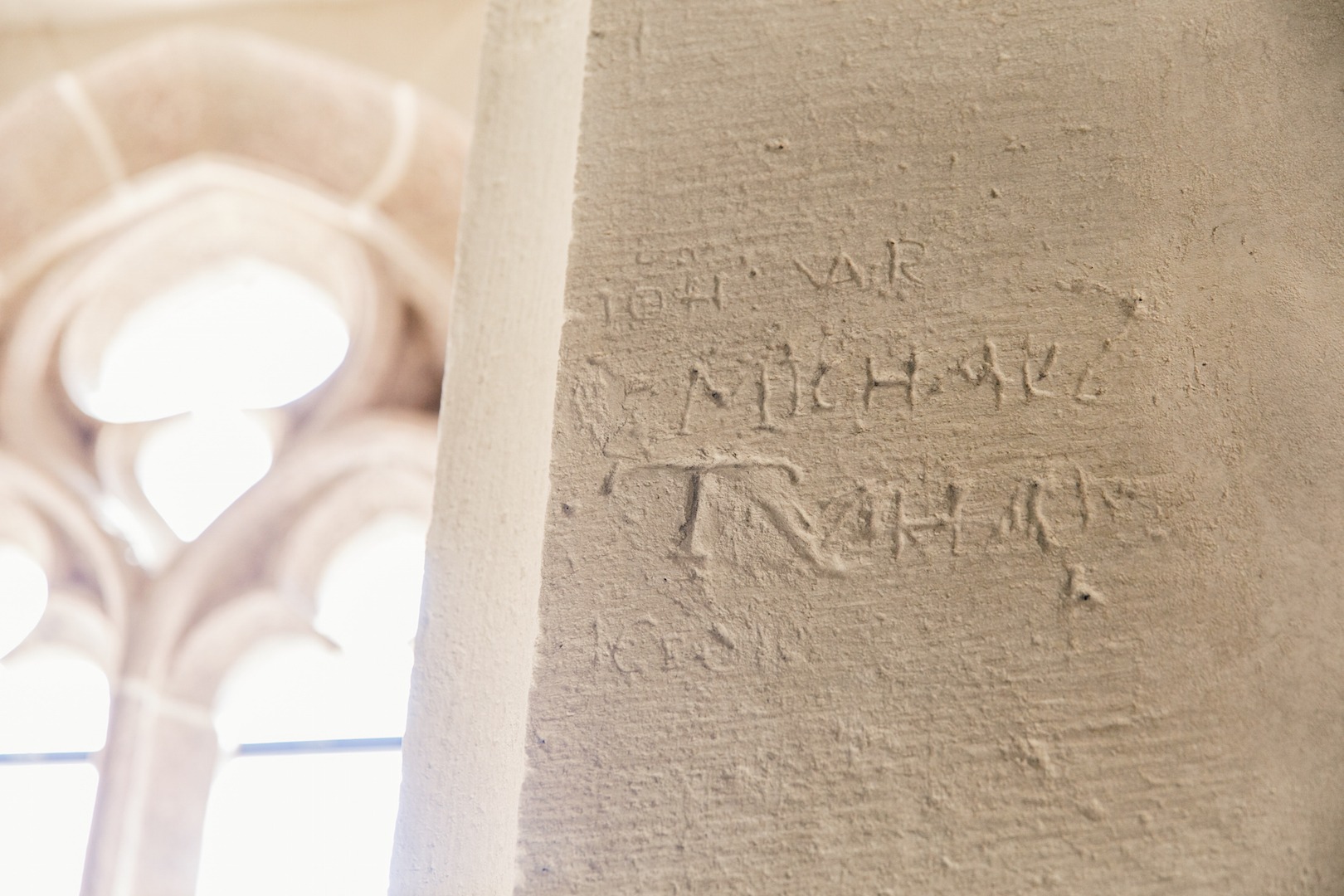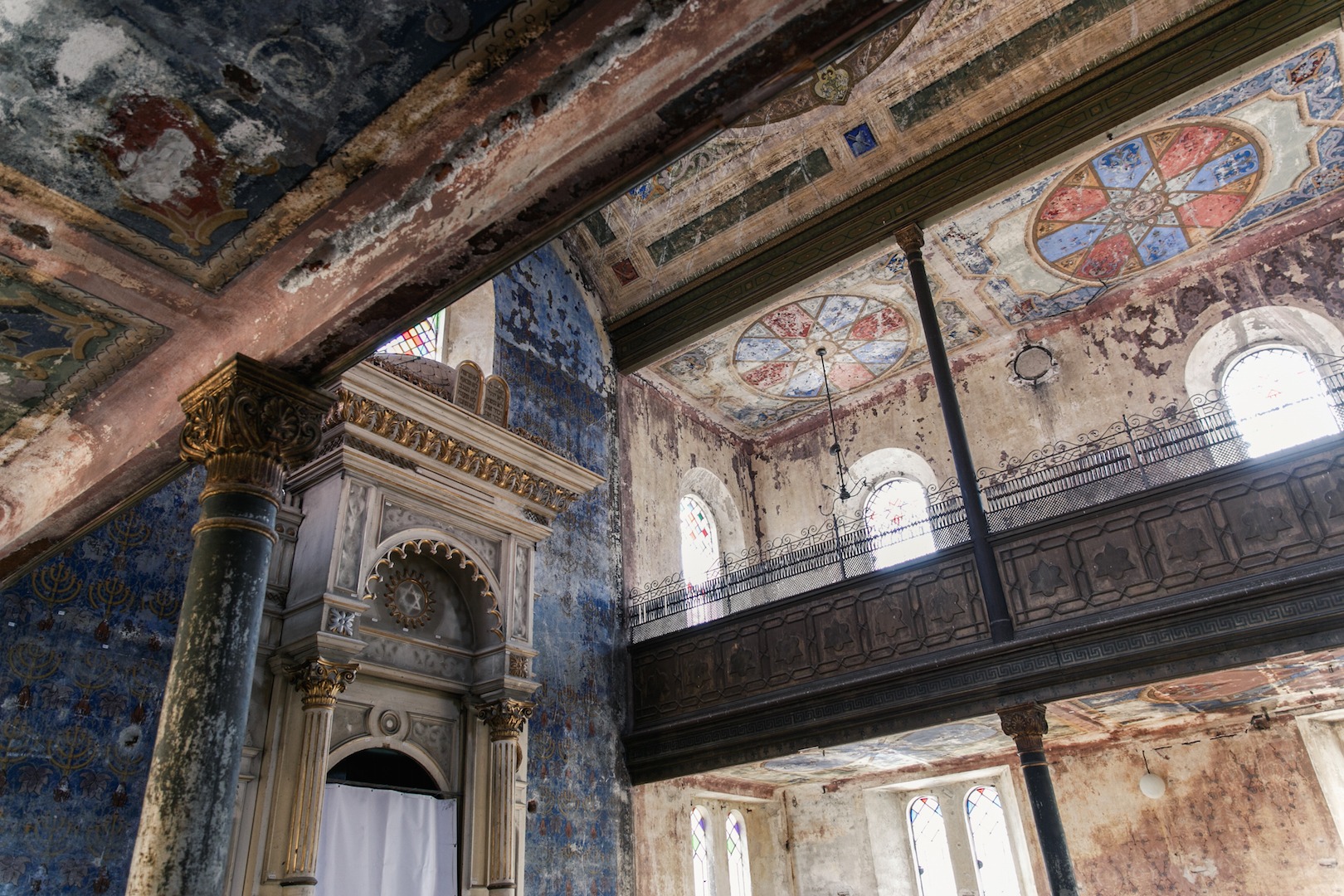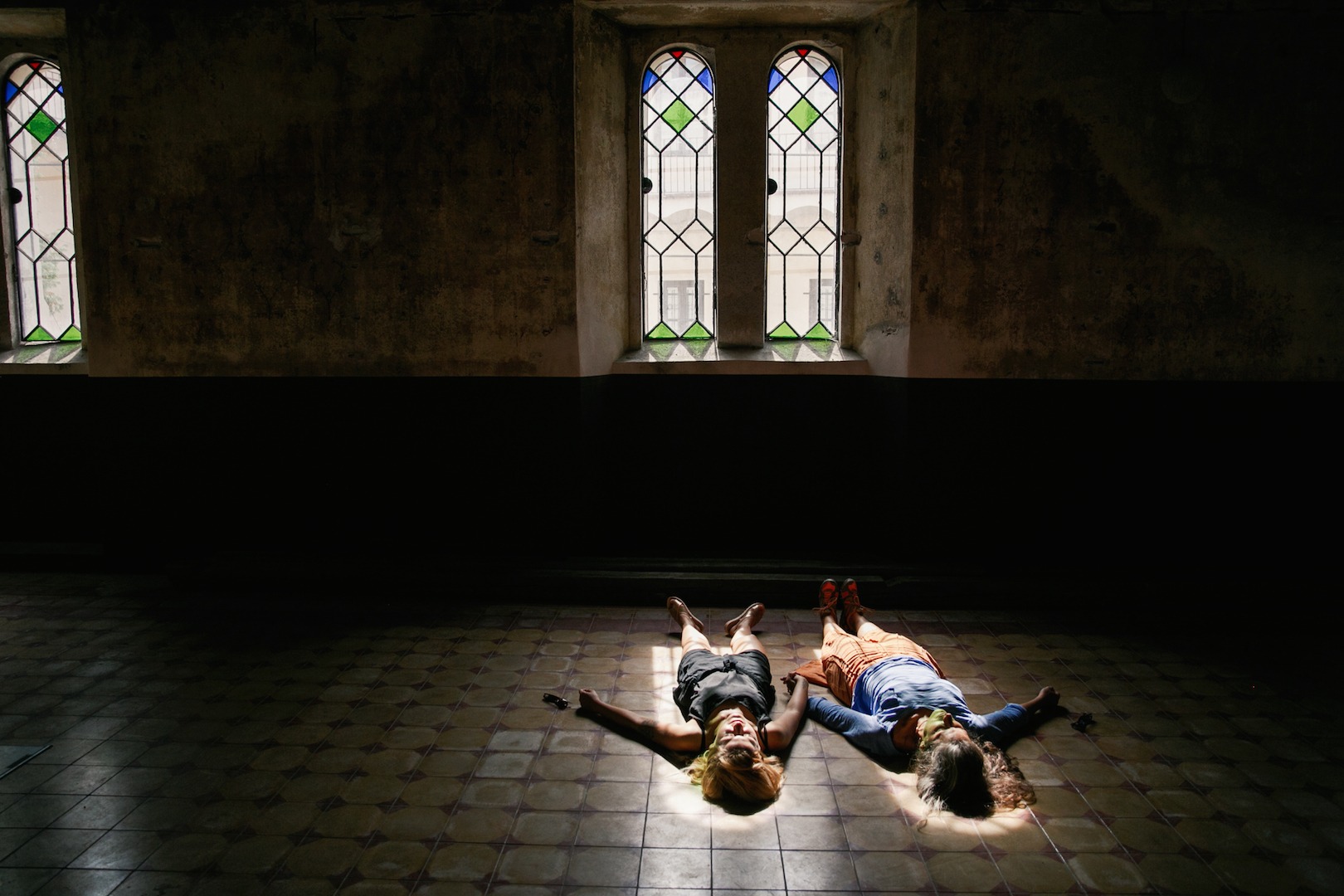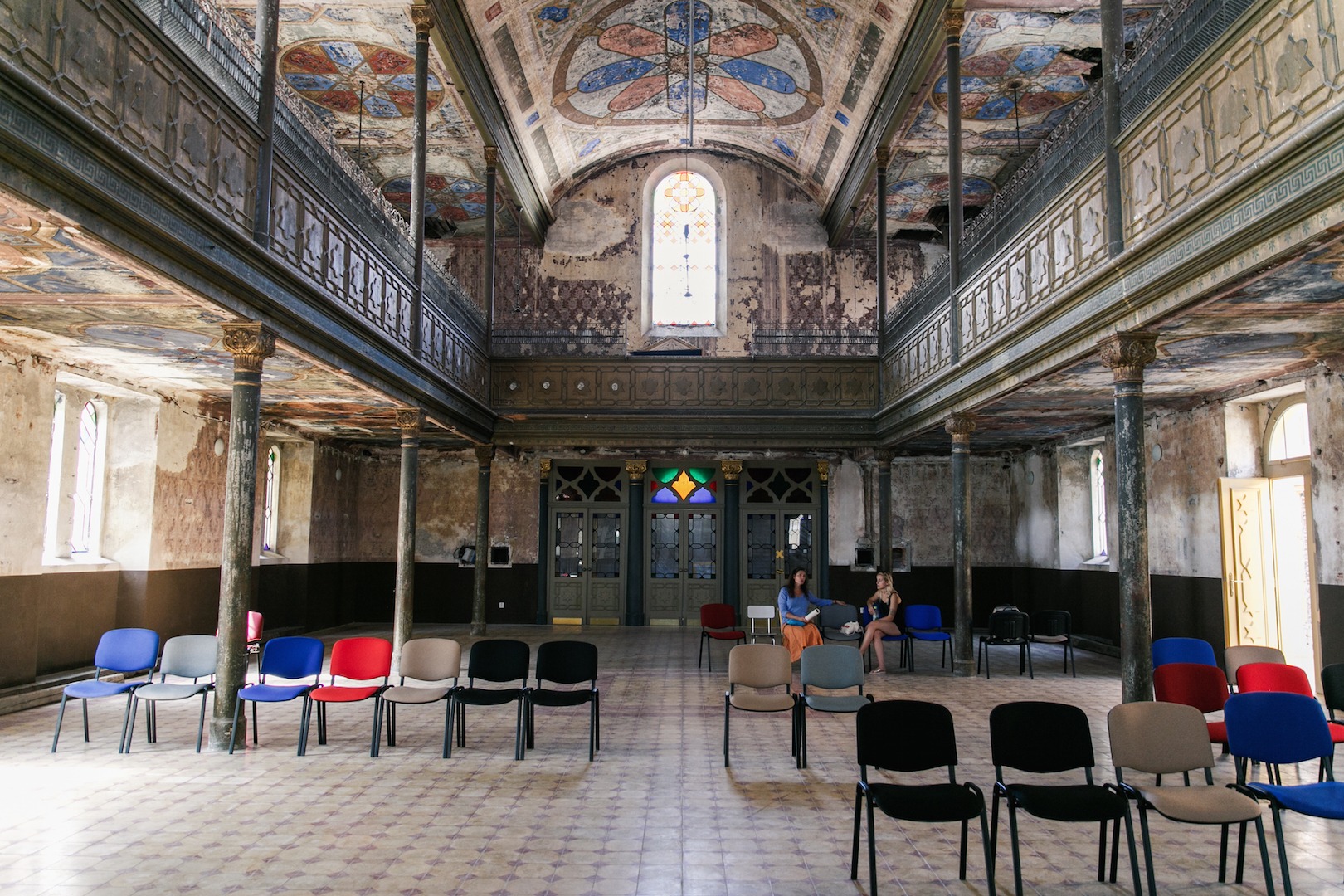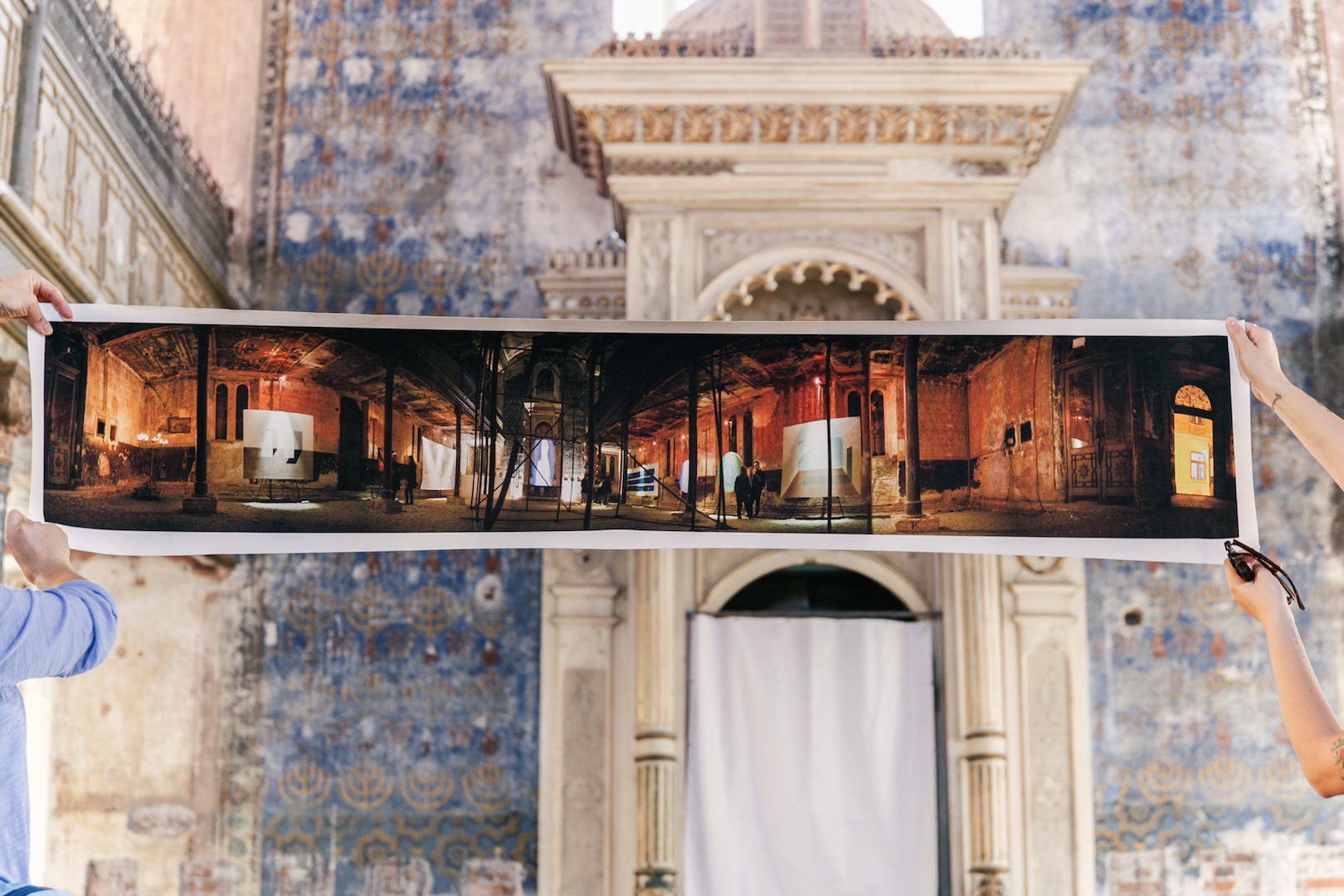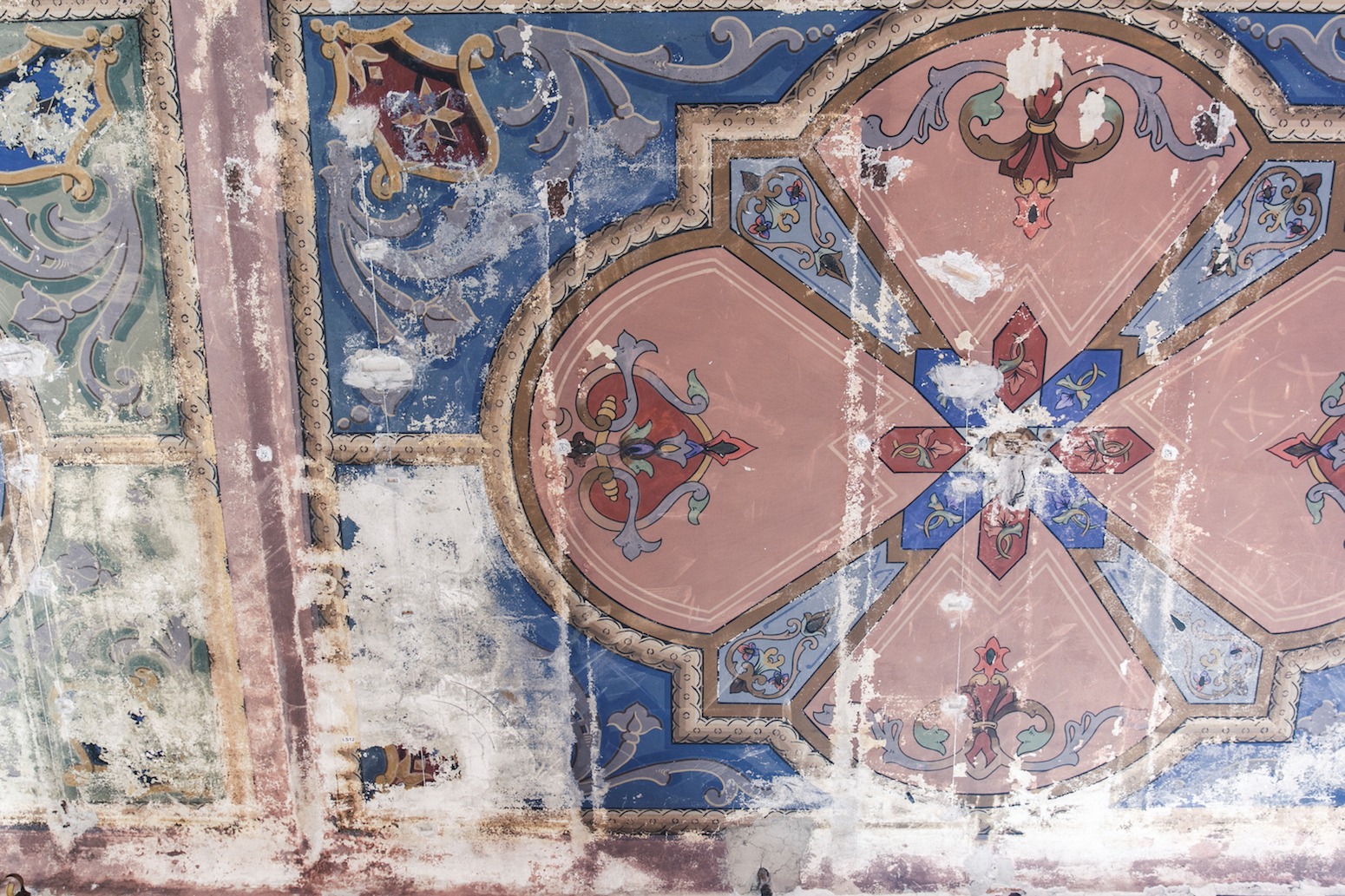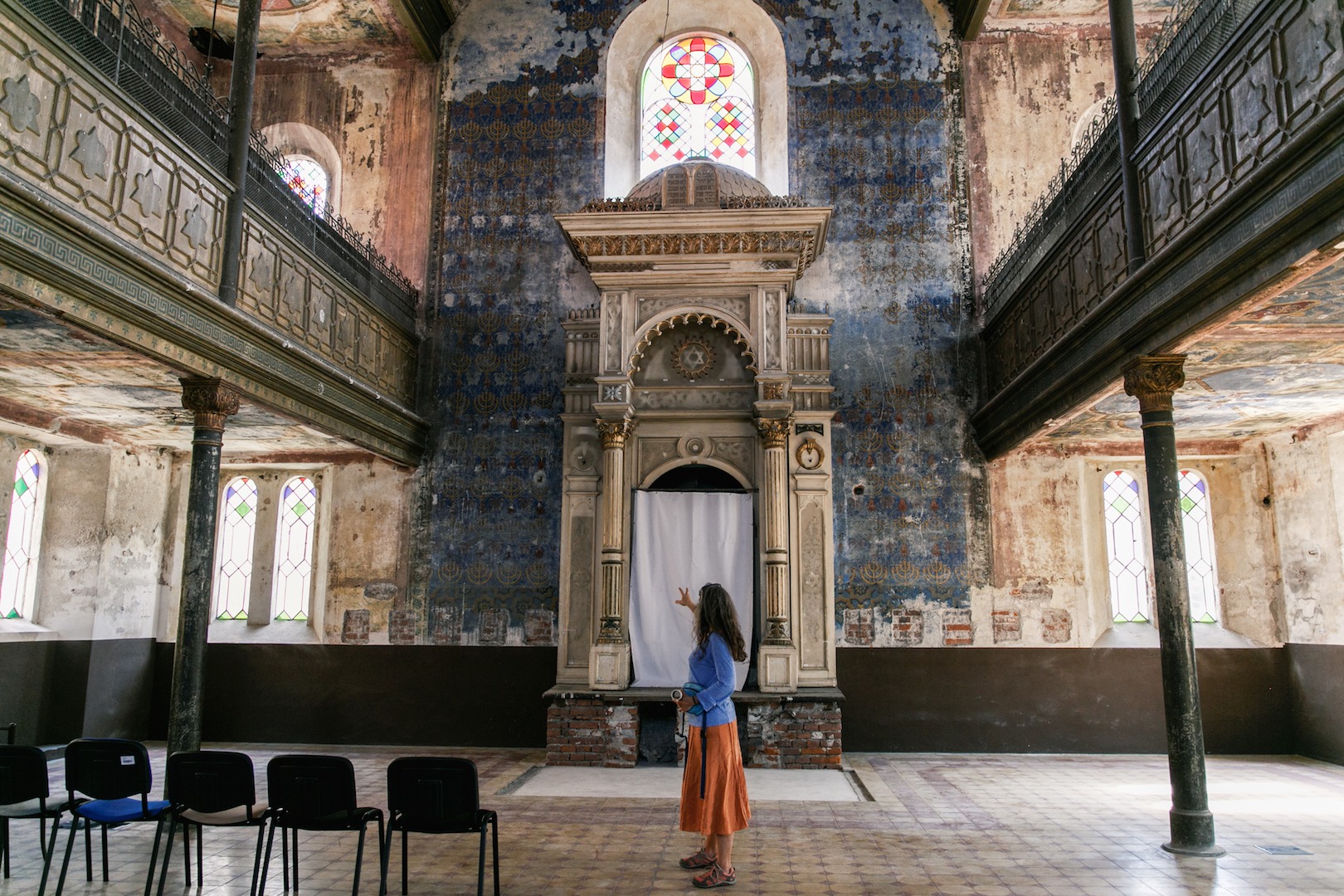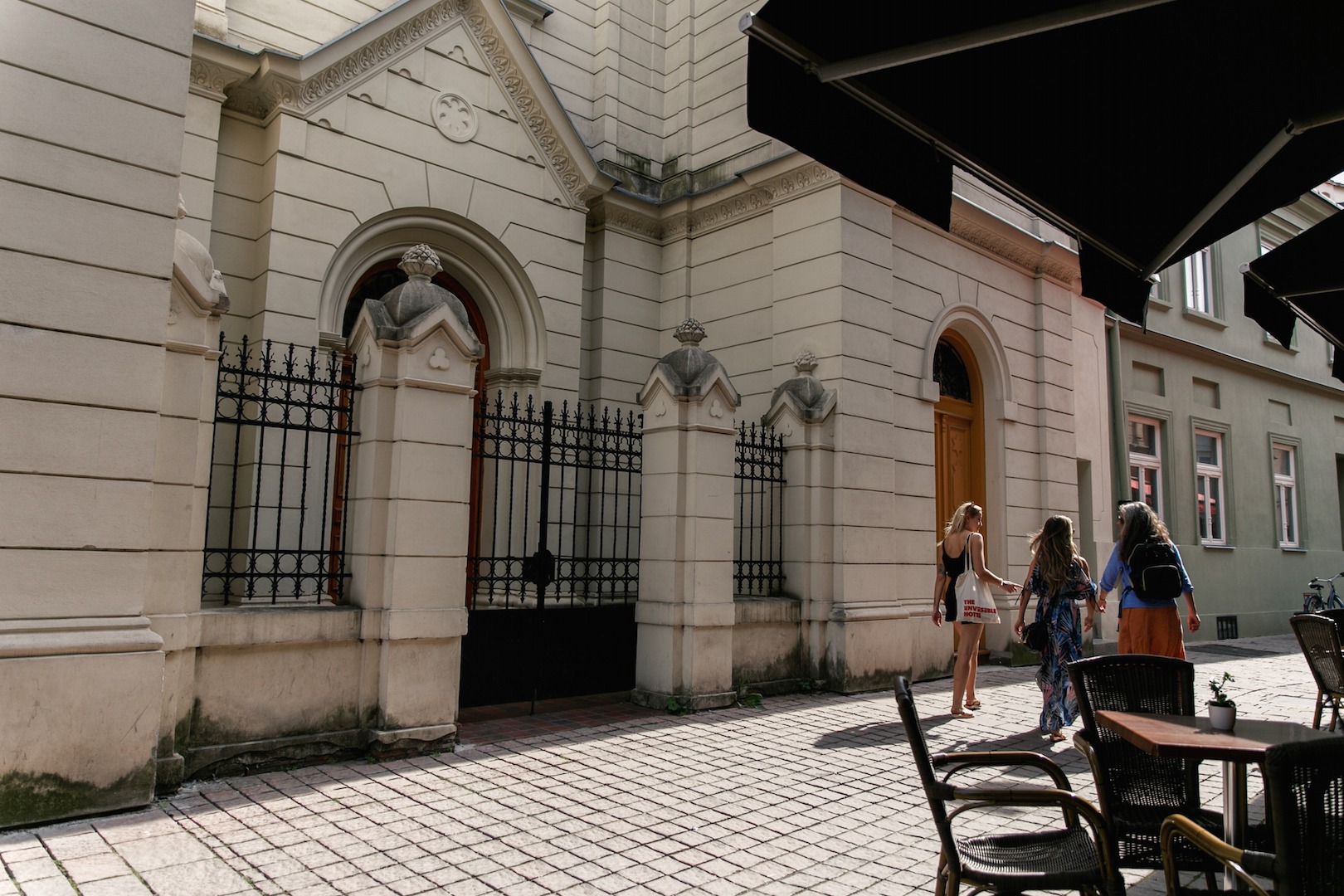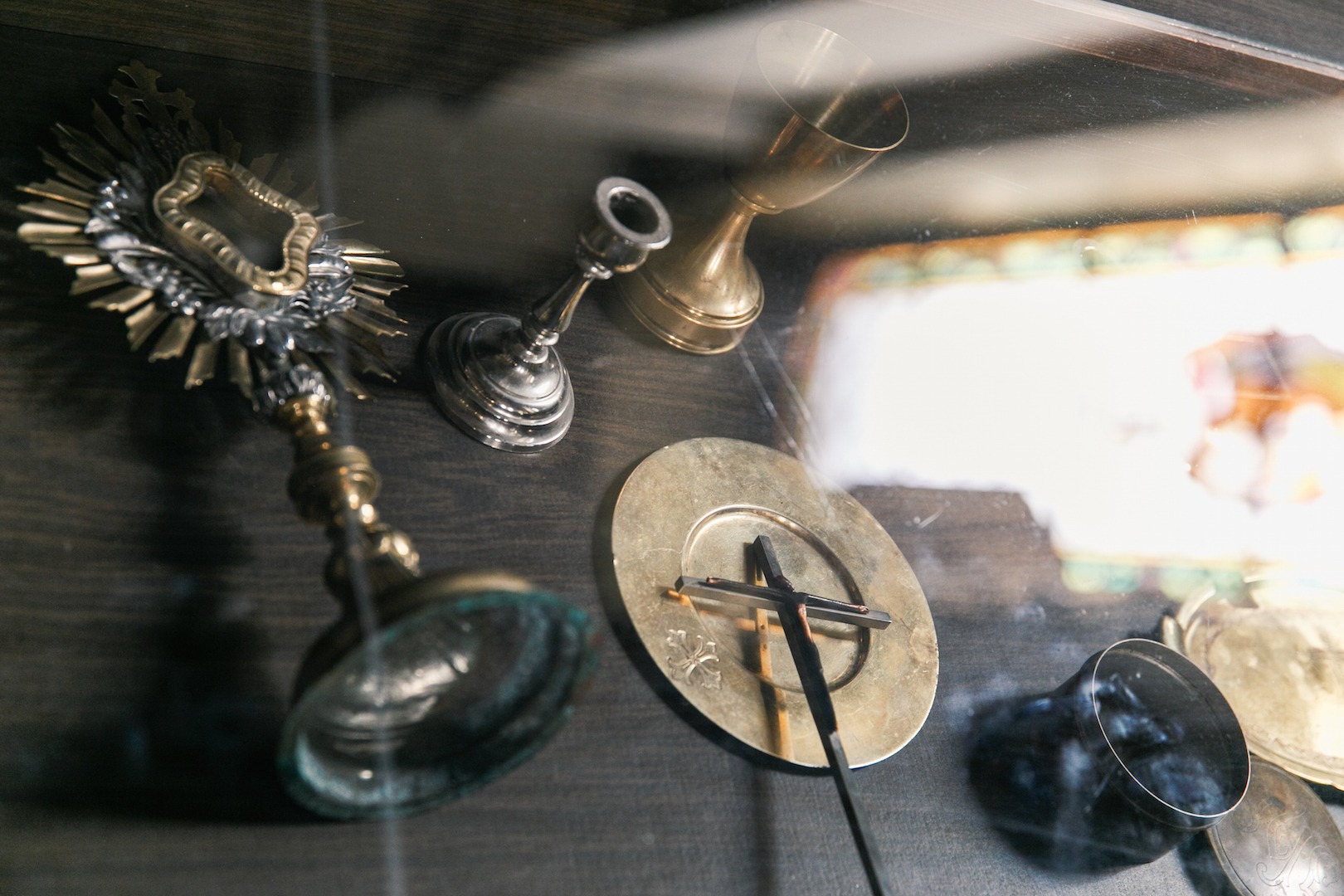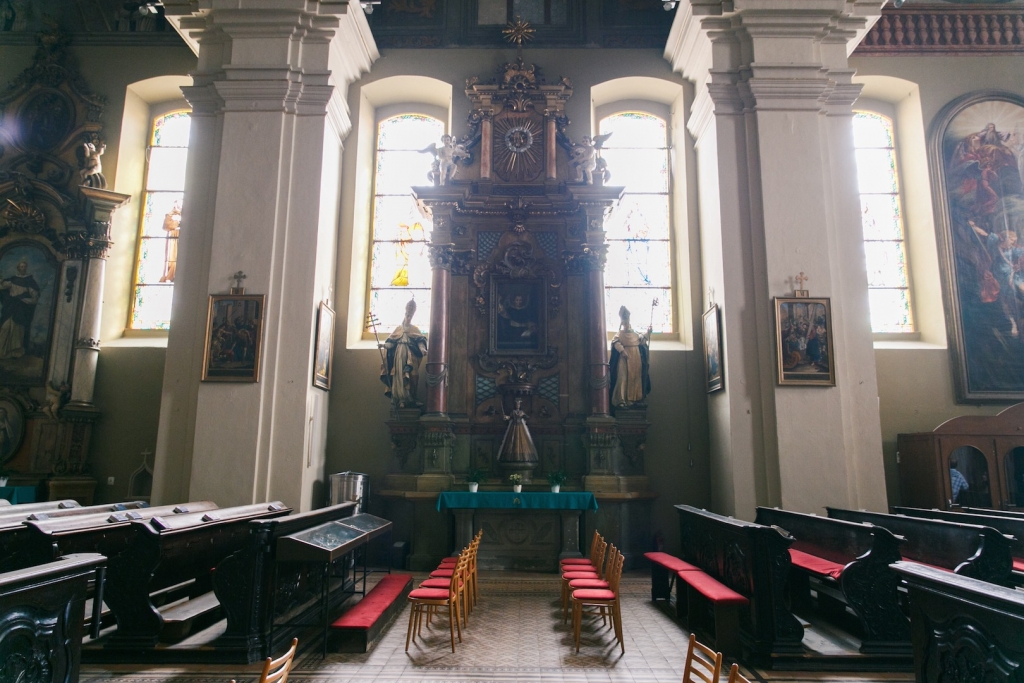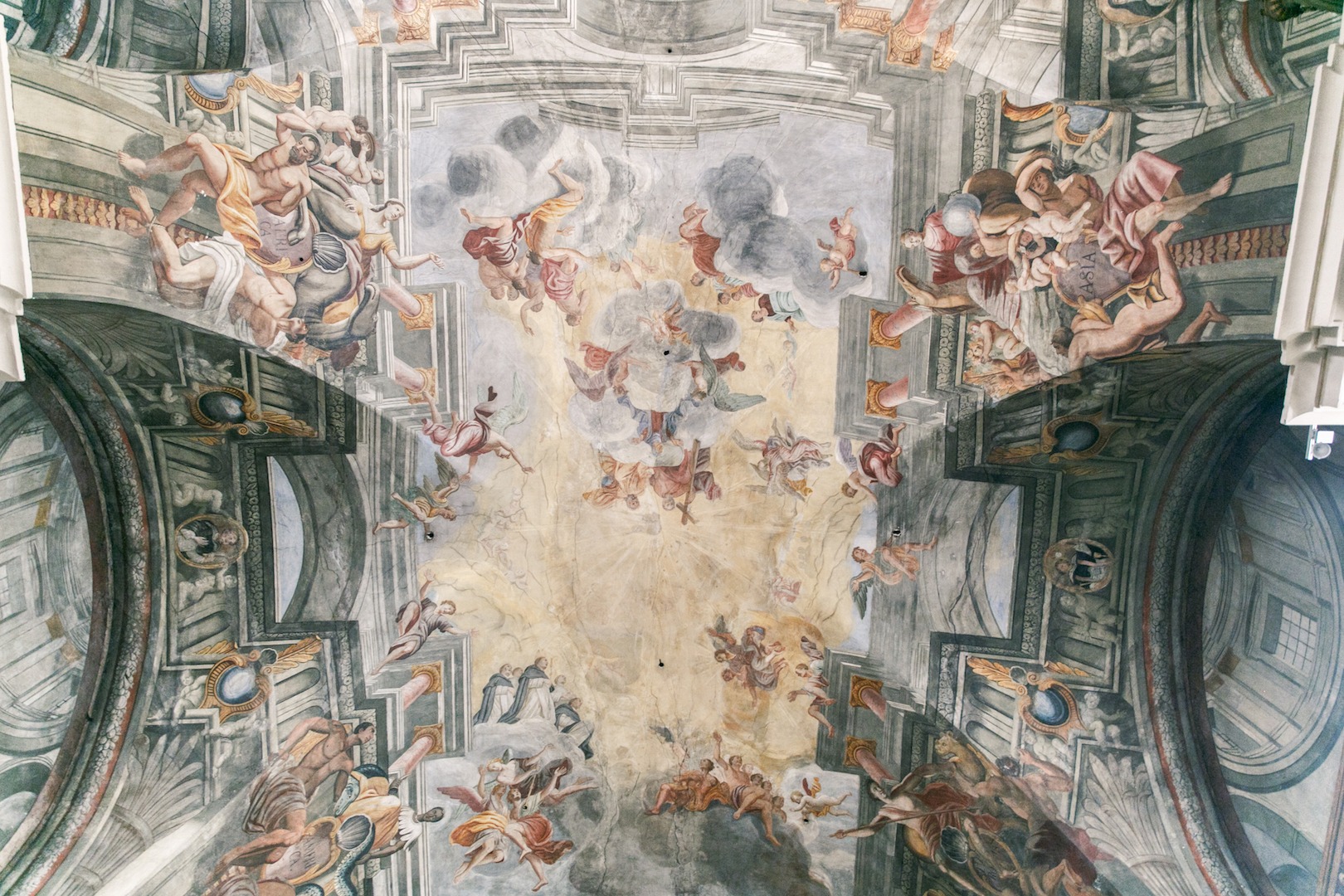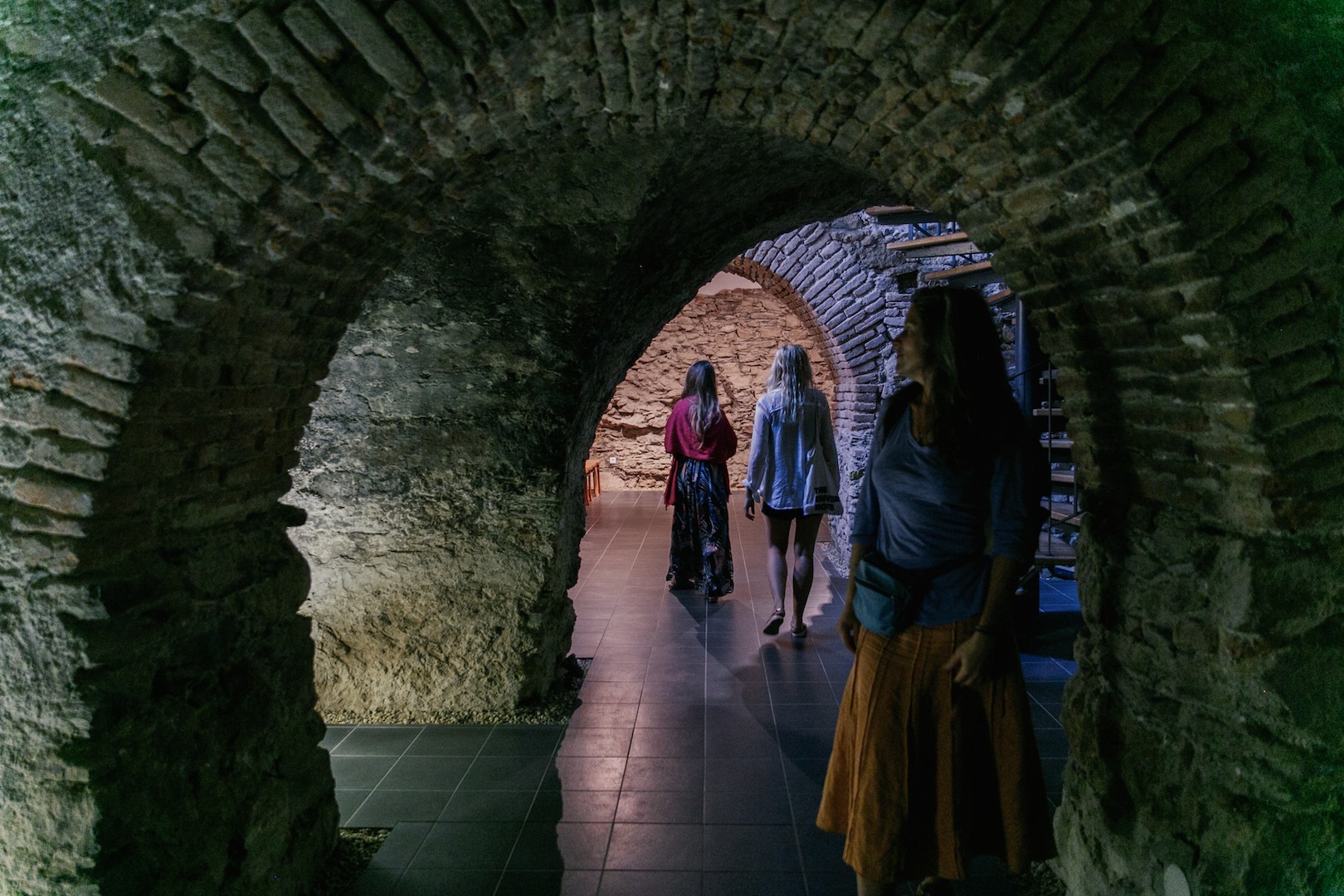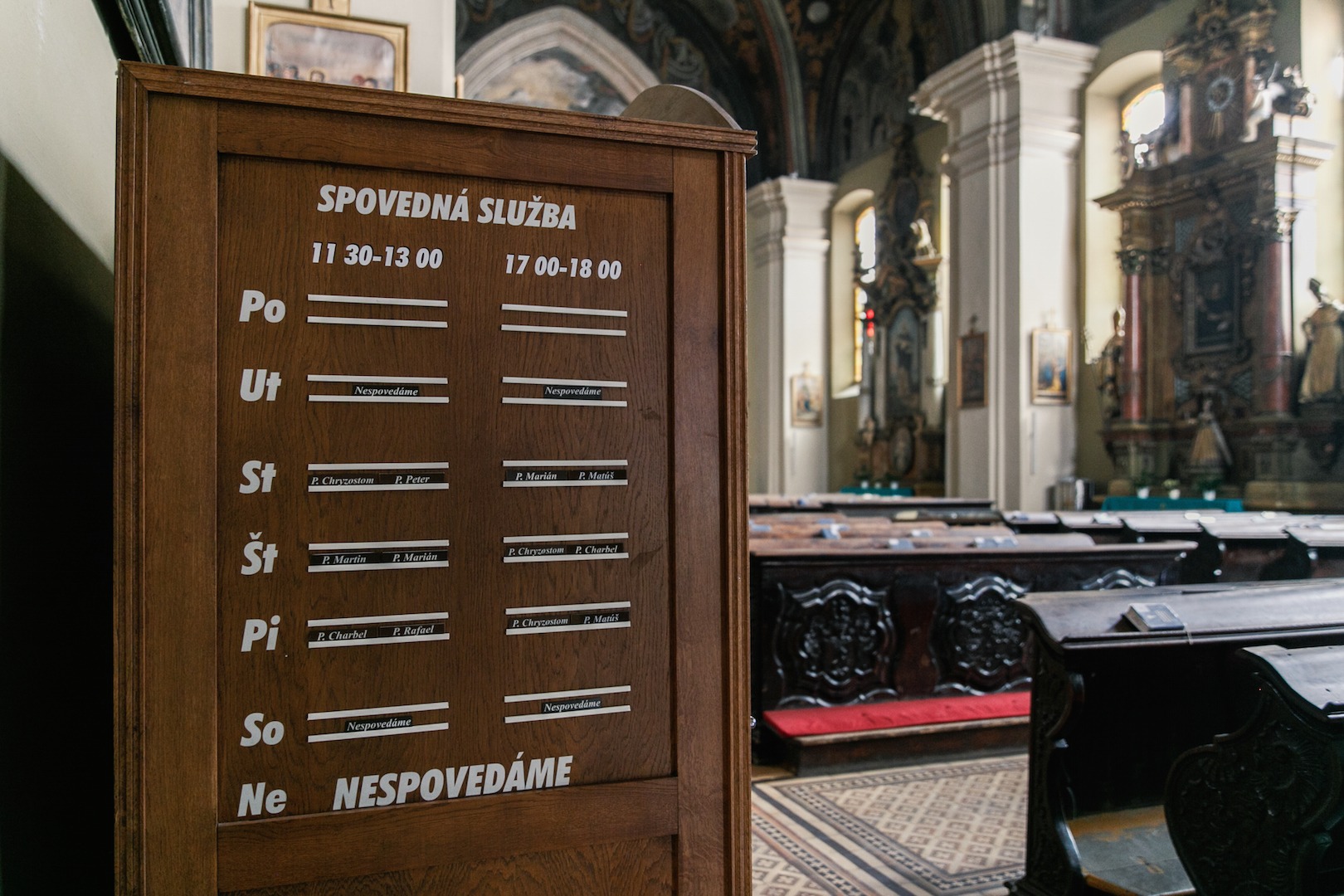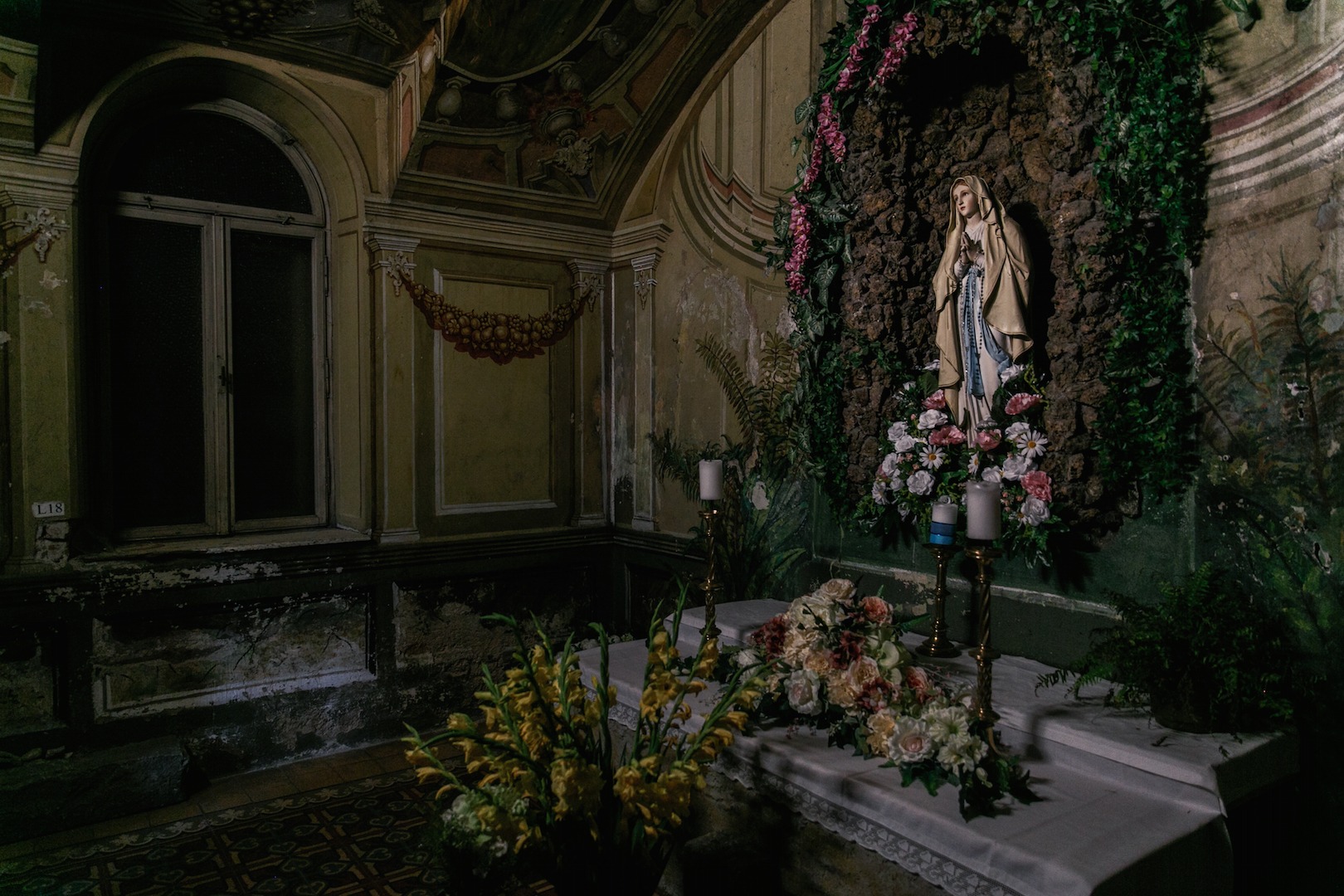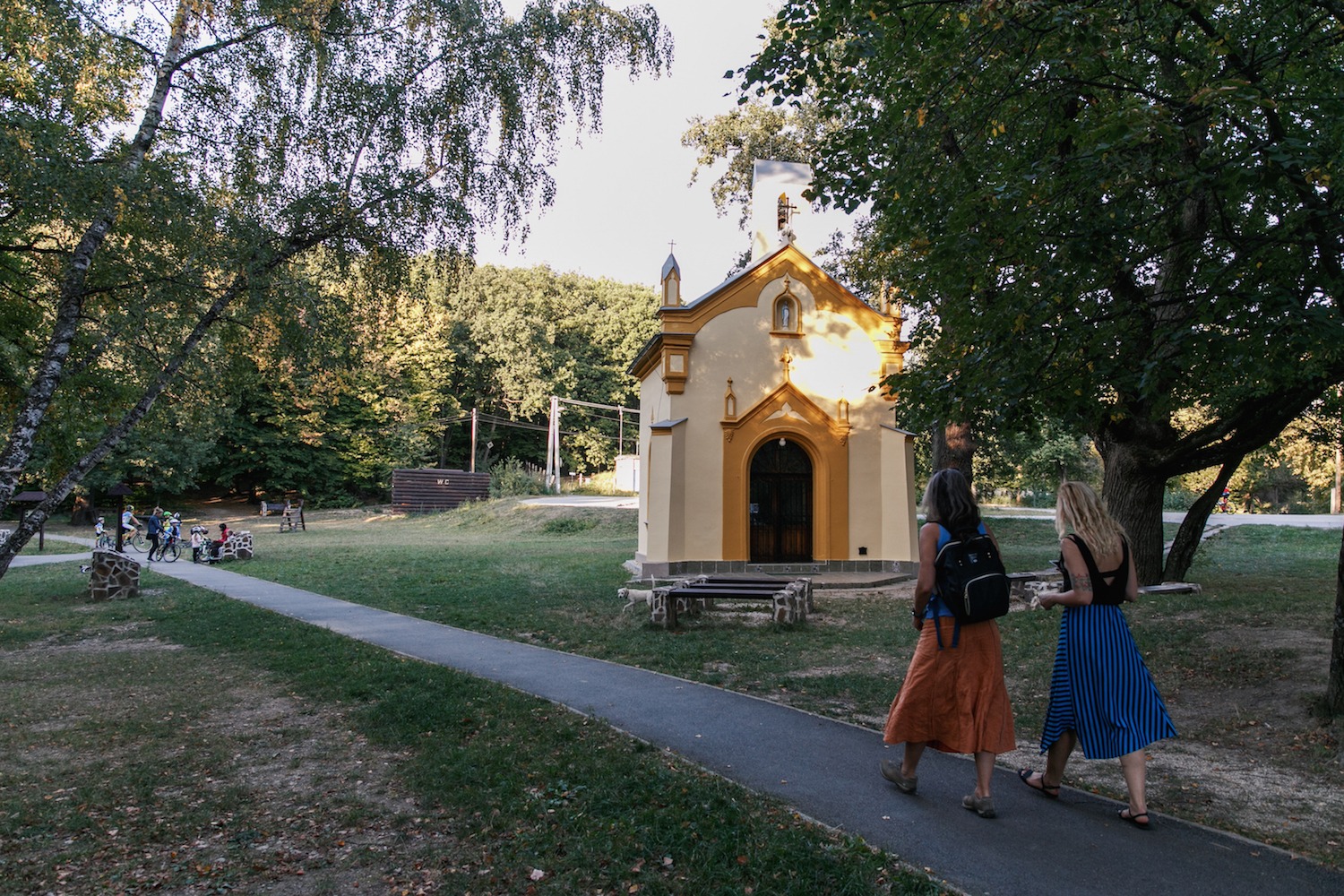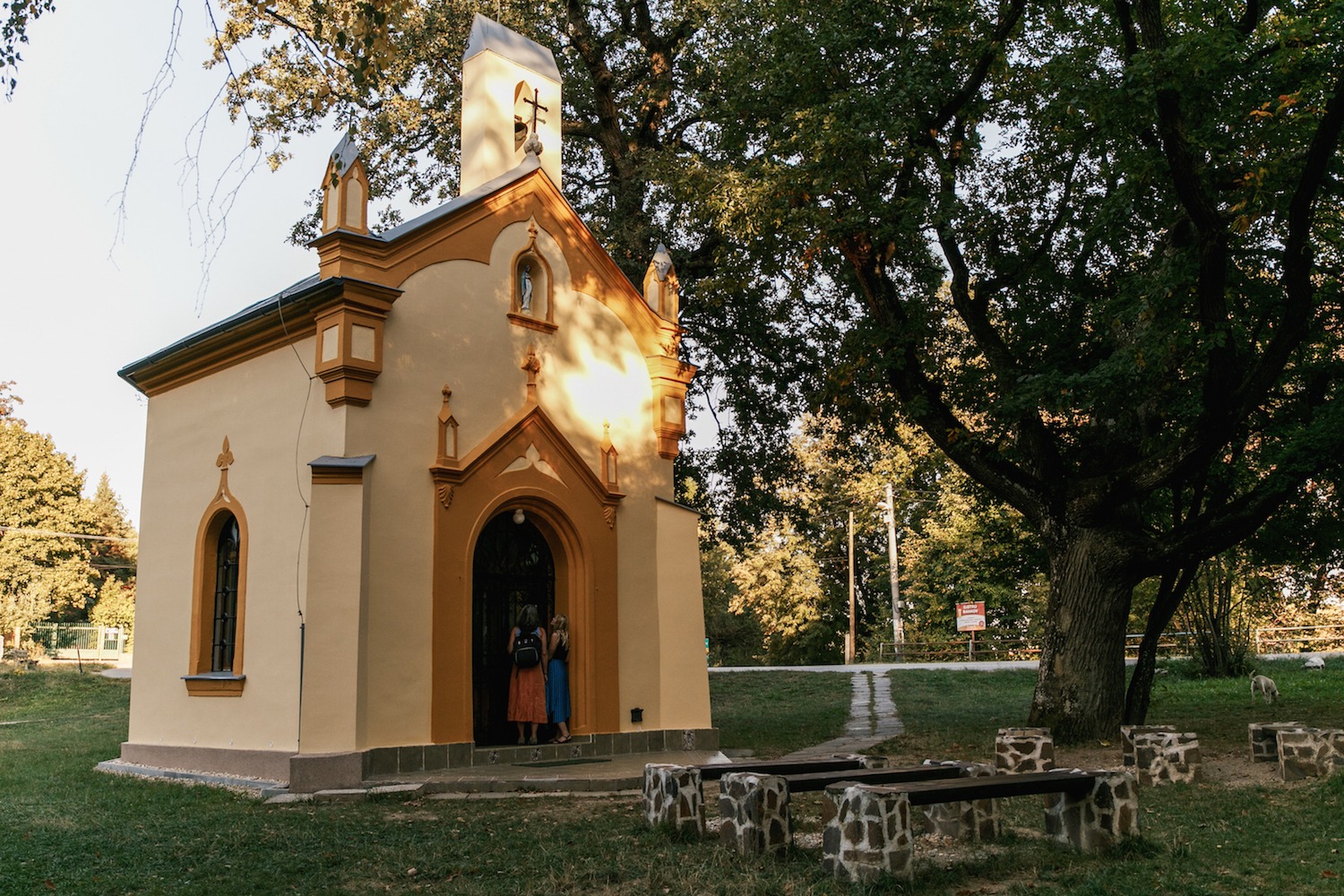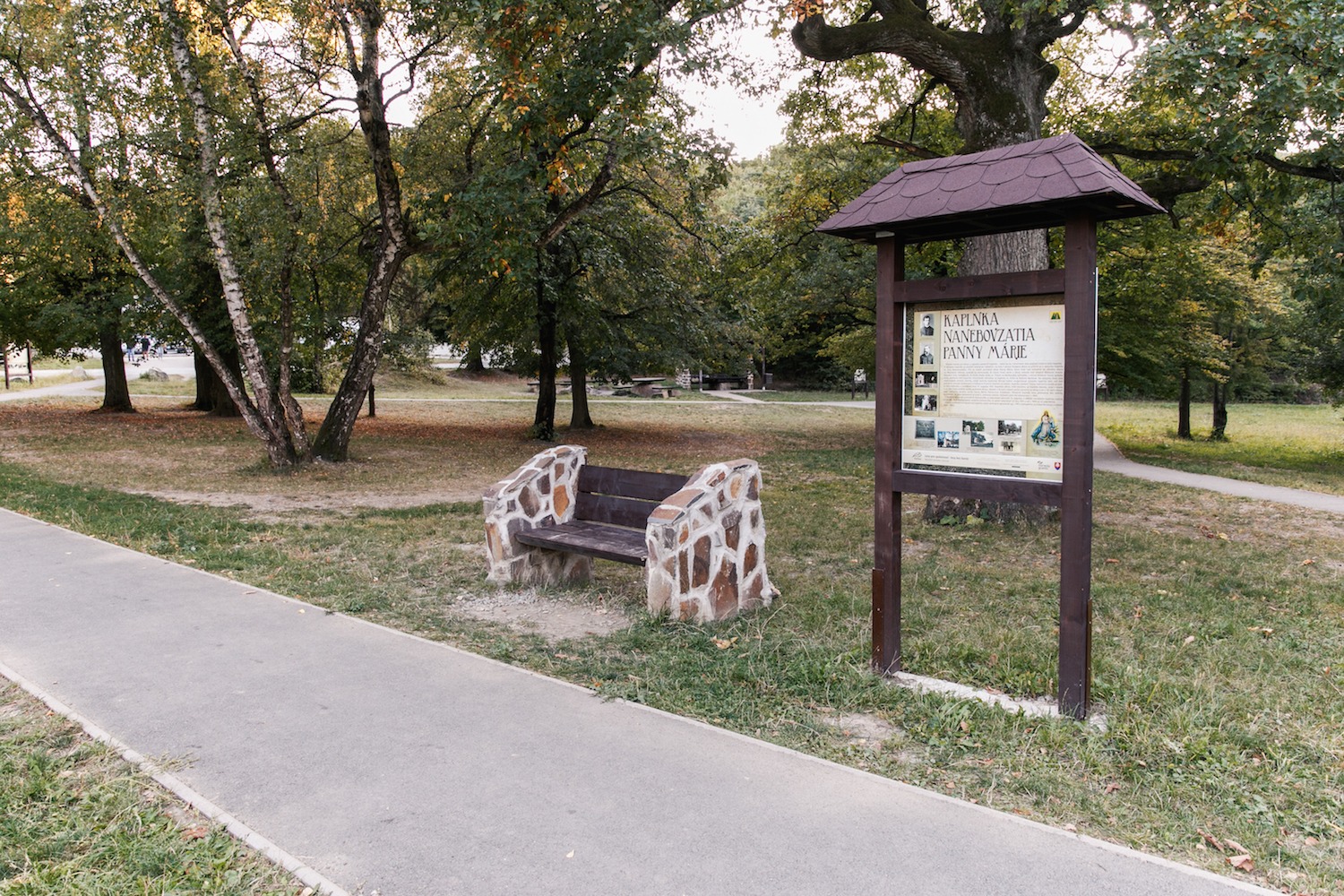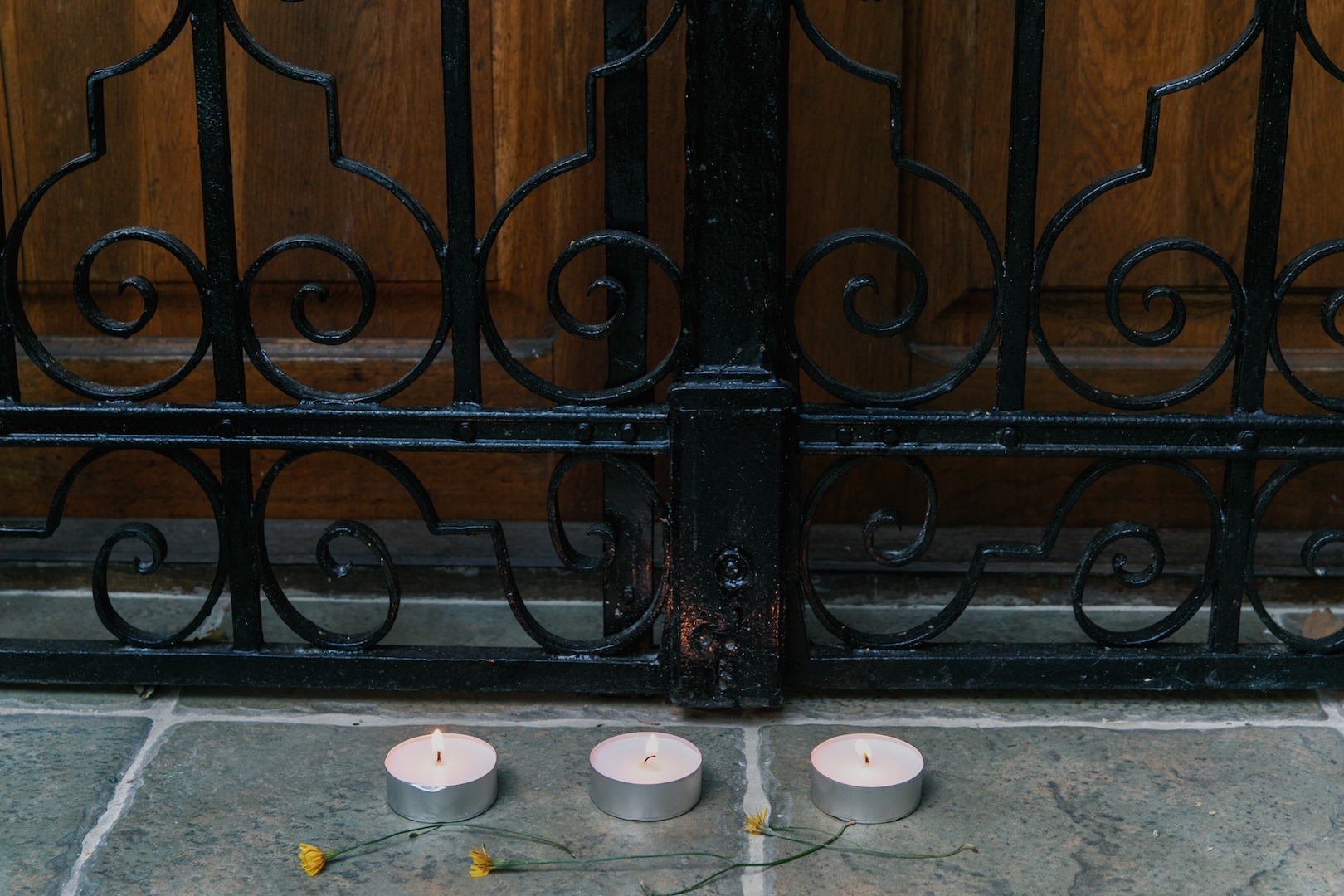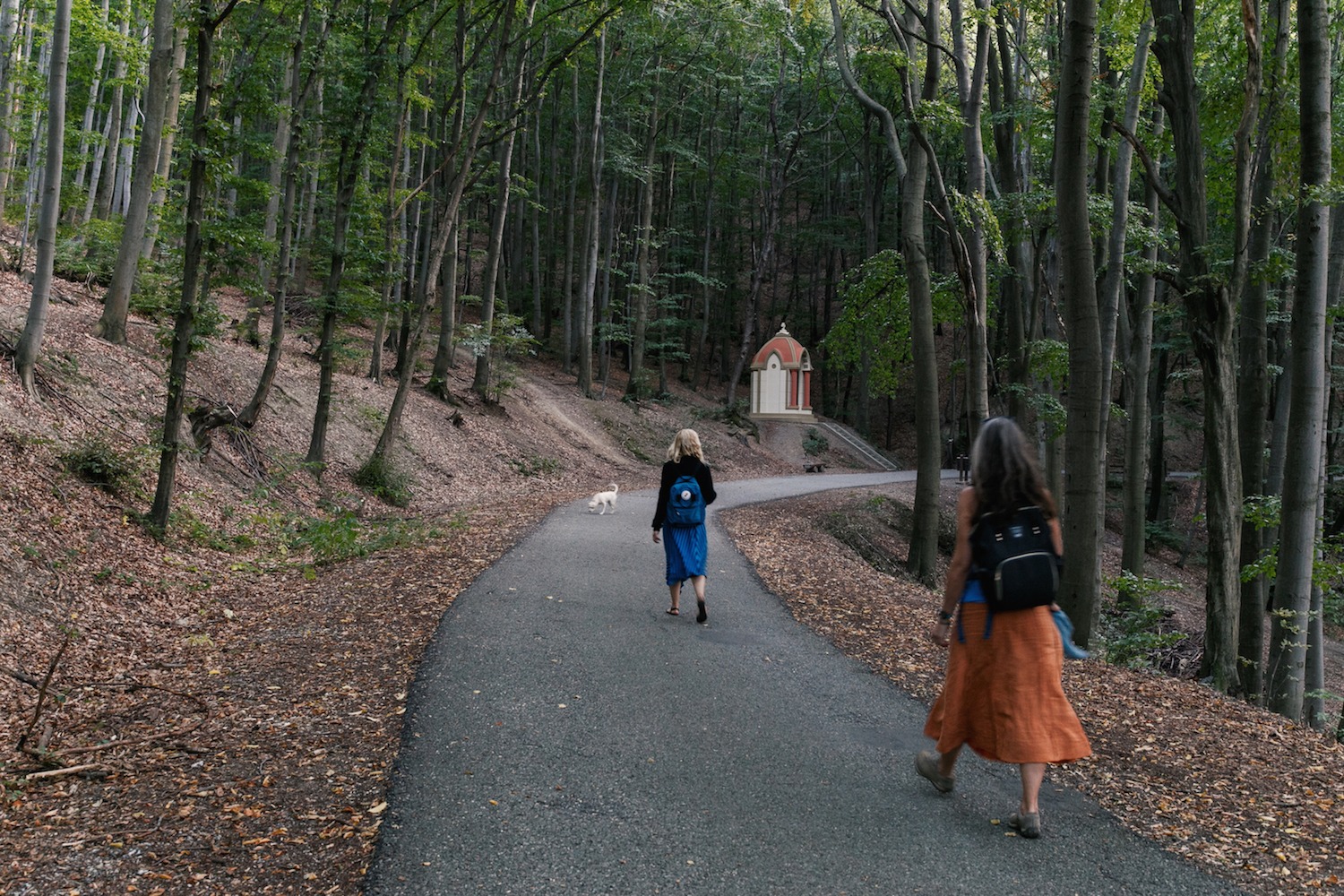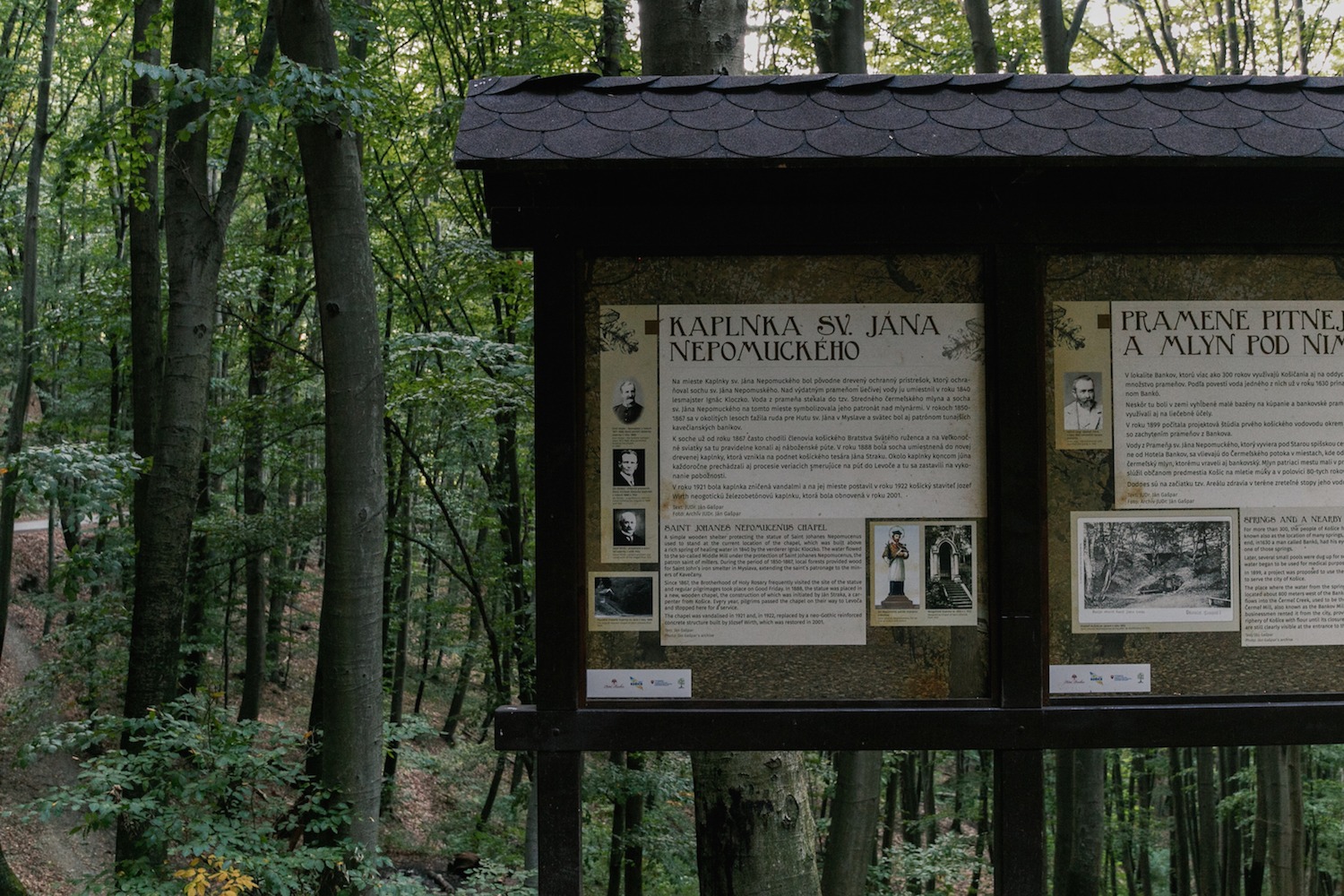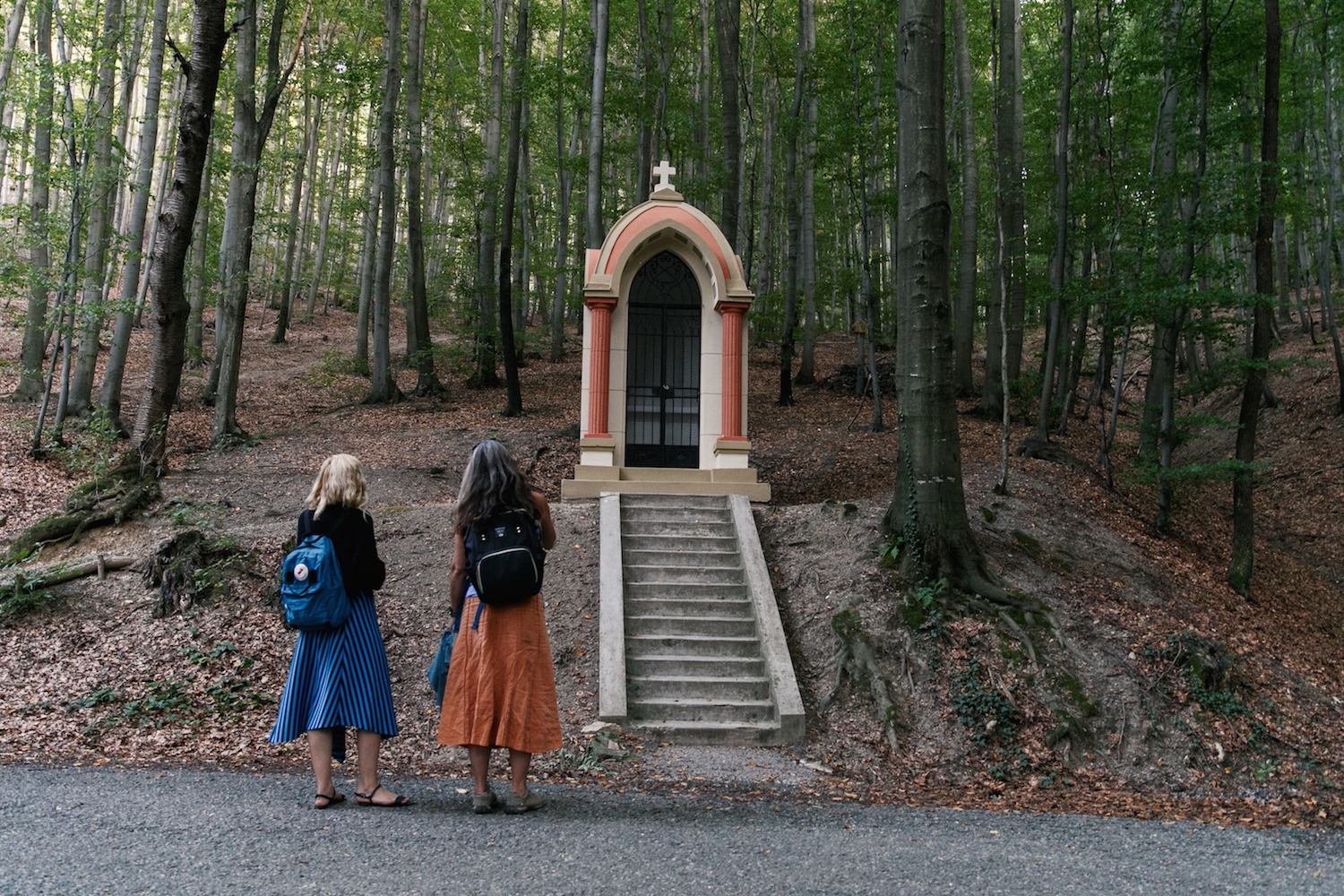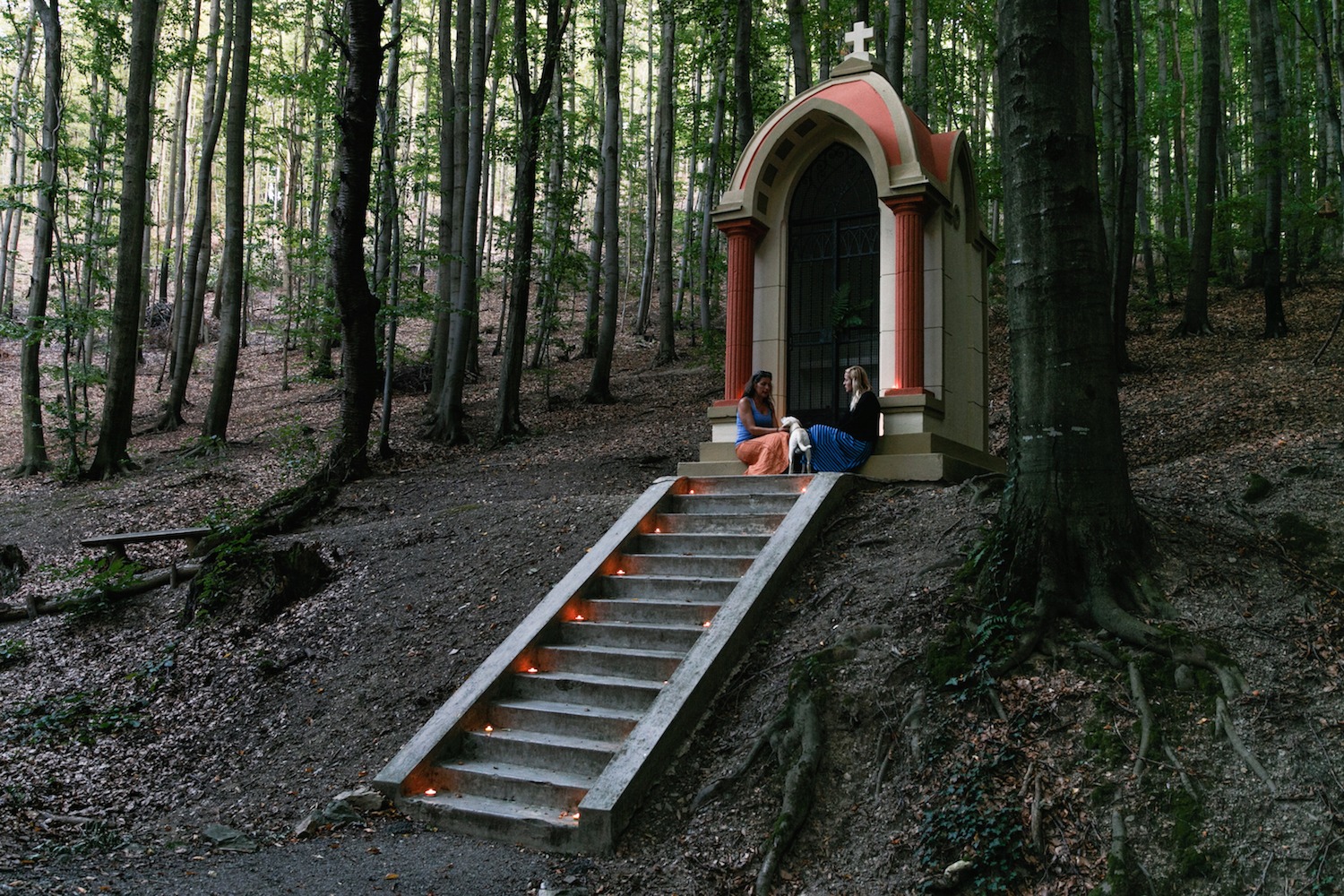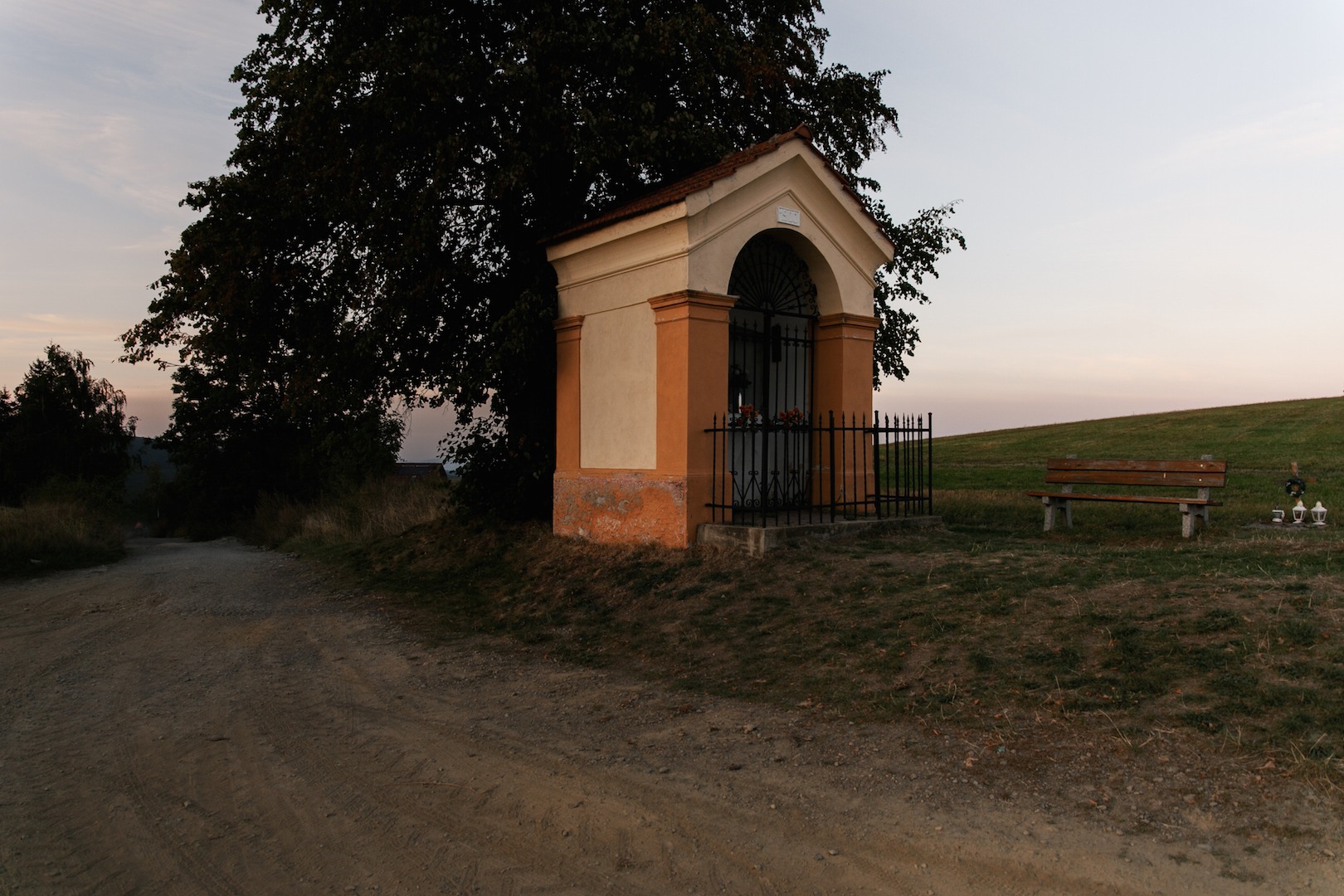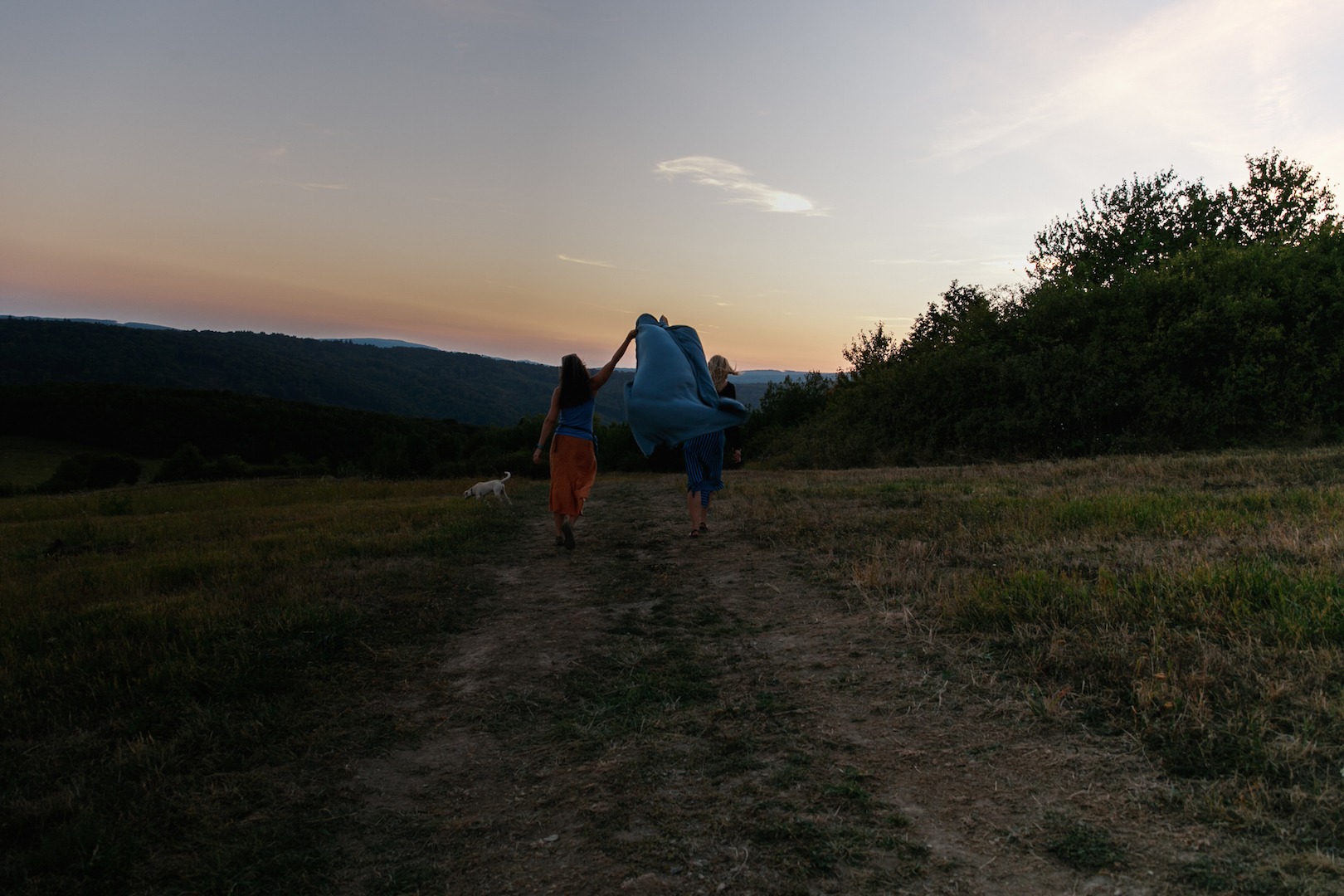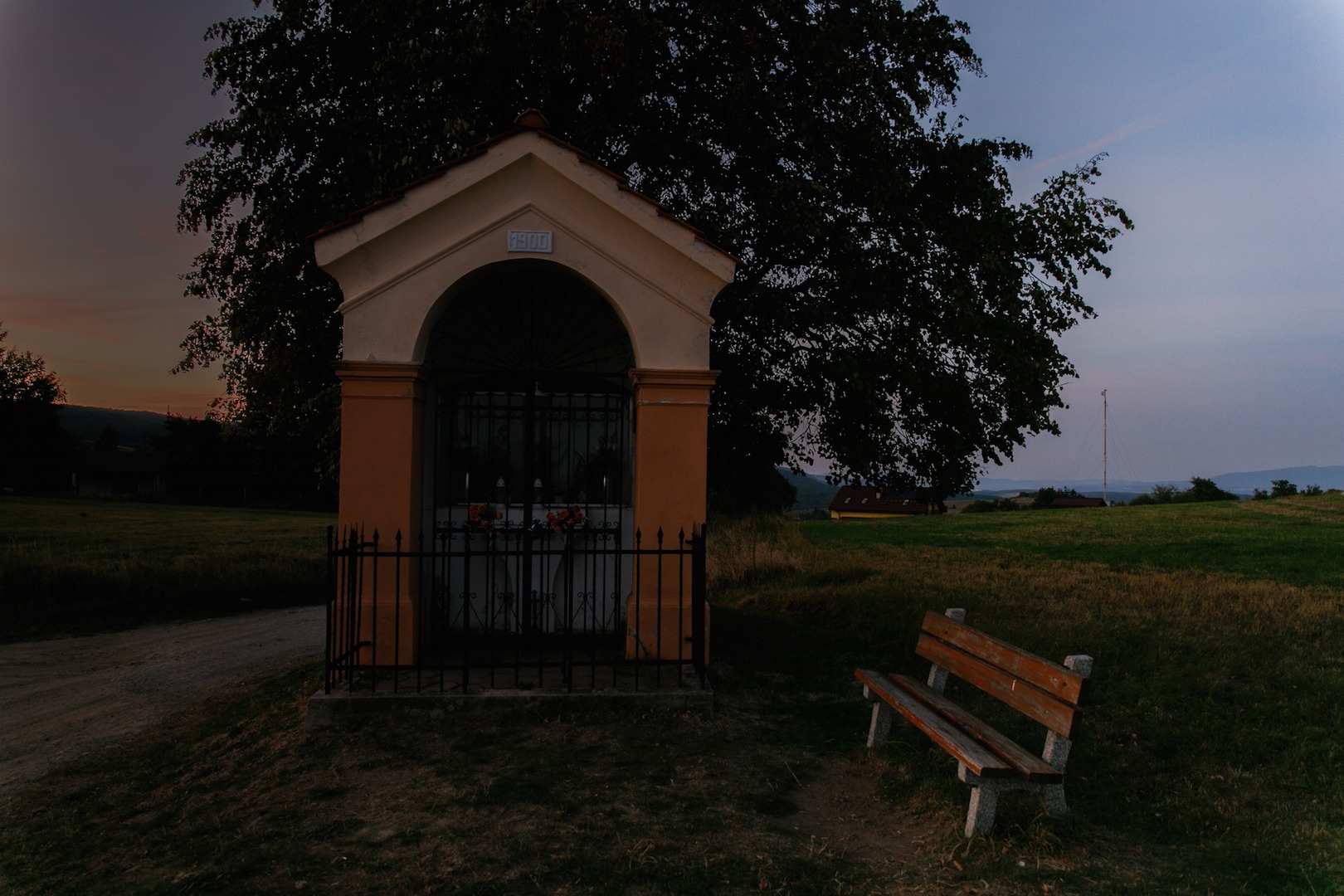Top 7 sacred & divine places of Košice
Get to know what’s about to happen this month in Košice – Festival of sacred art will take place this November and you’re more than welcome to join. On such occasion, we went through one of our own sacred pilgrimages we’d done earlier at the end of summer. 7 places we visited embody the spiritual aura of Košice and charm to be explored. And all of that accompanied by our local ceramist Andrea Čepiššáková. Have a look at these beautiful buildings which take your breath away.
The Synagogue on Puškinova Street
We set off at Puškinova Street, in a close distance to Jakabov Palace or Railway station. Sitting right next to a frequent road and popular old-fashioned-like Mlynská street, one encounters a pink Jewish synagogue. It’s actually the last one out of 6 former ones that still serves its original function and gives space to ceremonies and various occasions organized by Košice Jewish community. Constructed in 1927, the synagogue was built according to the design by Géza Boskó and Lajos Oelschläger.
The building was also a collecting place for further deportation of Jews – hence the evincing handwritings on the walls. Colourful window-panes and central metal chandelier of David’s star shape on a navy cupola background create the sacredness of the place. It is essential to visit Ľudovít Feld gallery when coming here – a famous painter from Košice who survived Auschwitz camp because of his talented sketches. When escaping the camp he managed to save a few other lives apart from his own. Thanks to this fact he’s been remembered by the city and its citizen for decades, even posthumously. His statue and paintings are included inside the synagogue’s adjacent gallery as well as of some other Jewish artists. The newly-installed memorial has been erected recently in nearby Drevný park under the name Feld’s park.
St Elisabeth’s Cathedral / Southern tower
The gem of the city, the pride of Eastern Slovakia, gothic lense and the most majestic building in Košice. Thousands of believers, atheists, foreign or local incomers travel here every year to worship the beauty of the dome, style of its pillars, window-panes, golden altar or gingerbread roof. A typical visit encompasses the northern tower ascend from which reddish rooftops emerge all around. Yet we opted for the southern tower hiding an inner mixture of narrow corridors and unfinished top – the dome is so low in here that you can touch it with your own fingers. What the southern tower uncovered for us was The sacred-blood cult. Many may not be familiar with the story behind the Elisabeth’s Sacrament of the former Church of St Elisabeth: a clumsy priest accidentally dropped the consecrated wine on a white cloth during the official ceremony back in the 14th century.
As it is said, Christ’s face appeared in the middle of the stain and the pope Boniface IX ordered to forgive those sinners who would provide financial renovation for the dome, the same way it worked in Venice or Assisi at that time. The Church was now officially considered a place of a miracle. His statement might be found in the papal bull from 1402. The southern tower, therefore, exhibits a baroque copy of this event. Round staircase and art installations are also to be found inside the tower. The most interesting one was an X-ray portrait of a statue we found in here, though. It belongs to a jubilee exposition under the lead of Mária Spoločníková who helped to preserve numerous gothic remains.
The dome also works as a starting point for pilgrimage routes to Levočská hora and is known internationally as a part of European Camino de Santiago. Learn more about the Way of Saint James through the eyes of Andrea Čepiššáková.
The Synagogue on Zvonárska Street
After the Cathedral’s visit, we proceeded to Zvonárska Street with the oldest Orthodox synagogue built in 1883. This area belongs to a former Jewish quarter in Košice and is now still home to the Jewish community with several offices or kosher restaurant. It’s possible to find a rabi’s flat in here, town hall or ritual spa
The war suffering had been embedded onto the walls during the Second World War and the building itself has gone through a lot of changes in the past century. The interior worked as a library warehouse and, consequently, got severely damaged and is being under reconstruction. We loved its current state, however, and recommend to visit the synagogue asap. The unique opportunity will occur during the dates of the Festival of sacred art when this Jewish temple will relive through the collective effort of numerous artists to bring its authentic atmosphere closer to tourists and locals as well.
Dominican Church / Church of the Assumption of the Virgin Mary
Our pilgrimage took us to the part of town that used to belong to the Dominicans. Their coming to Košice can be traced back to the 13th century when Dominican brothers firstly arrived from Hungary. Dominican square stands here today as well as a local farmers’ market with home-made wine, pasta, flowers or vegetables. The colossal centre of this area is a church/cloister built at the end of the 13th century. It’s the oldest church in Košice with the highest church tower in the town (68 meters).
It survived the Plague, Austrian-Hungarian reformation, religious riots, fires, reconstructions, regimes, owners or various different functions. This more than 7-hundred-year-old giant astonishes with the frescos from 18th century forming an illusion of a fictional open ceiling into the heavens above. We’ve paid special attention to the detailed corners of cupola illustrating the main continents of the Earth – ASIA, AMERICA, AFRICA, EVROPA. Fake scratches on the walls were supposed to add more of an ancient look to the church. We also looked under the ground surface and discovered catacombs below the cloister.
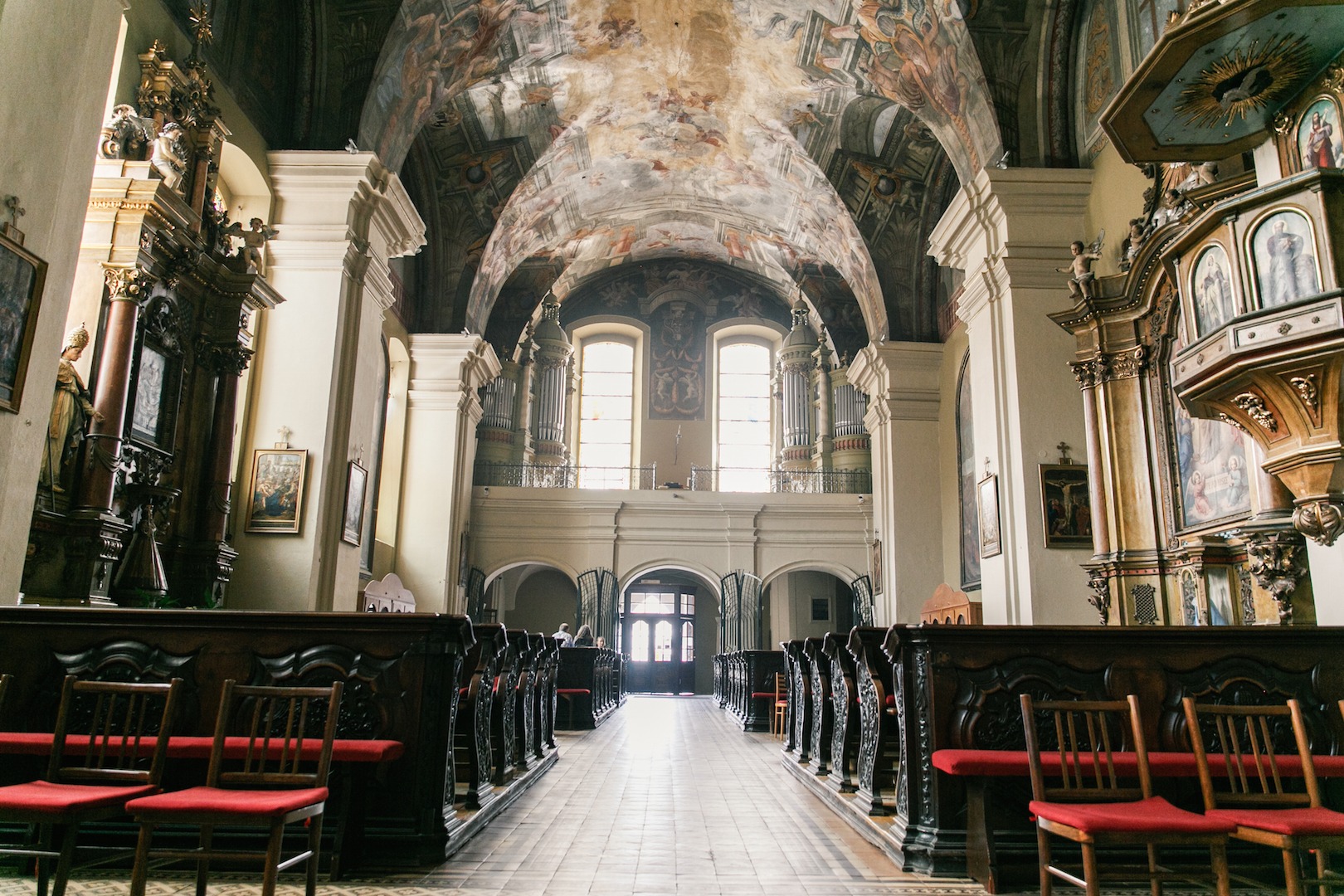
Chapel of the Assumption of the Virgin Mary, Bankov
Sacred spots are not only in the centre of Košice. We went on to the outskirts of the city and found three different chapels. The first of them was built in 1903 which is also mentioned on the marble stone written in the Hungarian language. Situated in the recreation area Bankov, it proudly stands in the middle of a park, close to forest trails and far from the city rush. The chapel has gone through a recent summer reconstruction and shines with pastel colours of yellow and orange shades.
Chapel of St Ján Nepomucký, Bankov
The second chapel we visited was built on the Old Spiš road and is devoted to Ján Nepomucký. He was ordained holy in 1729 by the Pope Benedict XIII, almost 400 years after his martyr death. The legend says that his vehement decision not to betray the king’s wife’s sins and thus break the seal of a confession made the king have him thrown into the waters of
Ján Nepomucký has become a frequent symbol near bridges as a patron for confessors, the drowning ones or rafters. Bankov chapel has been assigned to worship his martyrdom and generations of Košice citizens have come here to pray and pay their respect since the 19th century. Workers from a nearby mine also came here to seek for spiritual balance and to inhale the calmness of natural spring and wooden gazebo a little below the chapel.
Chapel of St Family, Kavečany
We were lucky to spend the end of the day on the hill in Kavečany with an amazingly magical view of the whole city. Solitarily yet not lonesome stands here Chapel of St Family erected in 1900. Therefore, from the three chapels we’d seen, this one was the oldest. It stands on the red line marking of Cesta
Sacred places, stories or spiritual legends of Košice are definitely one of the reasons to visit the eastern part of Slovakia. Book your room with The Invisible Hotel and admire frescos and ancient walls of churches and synagogues.
